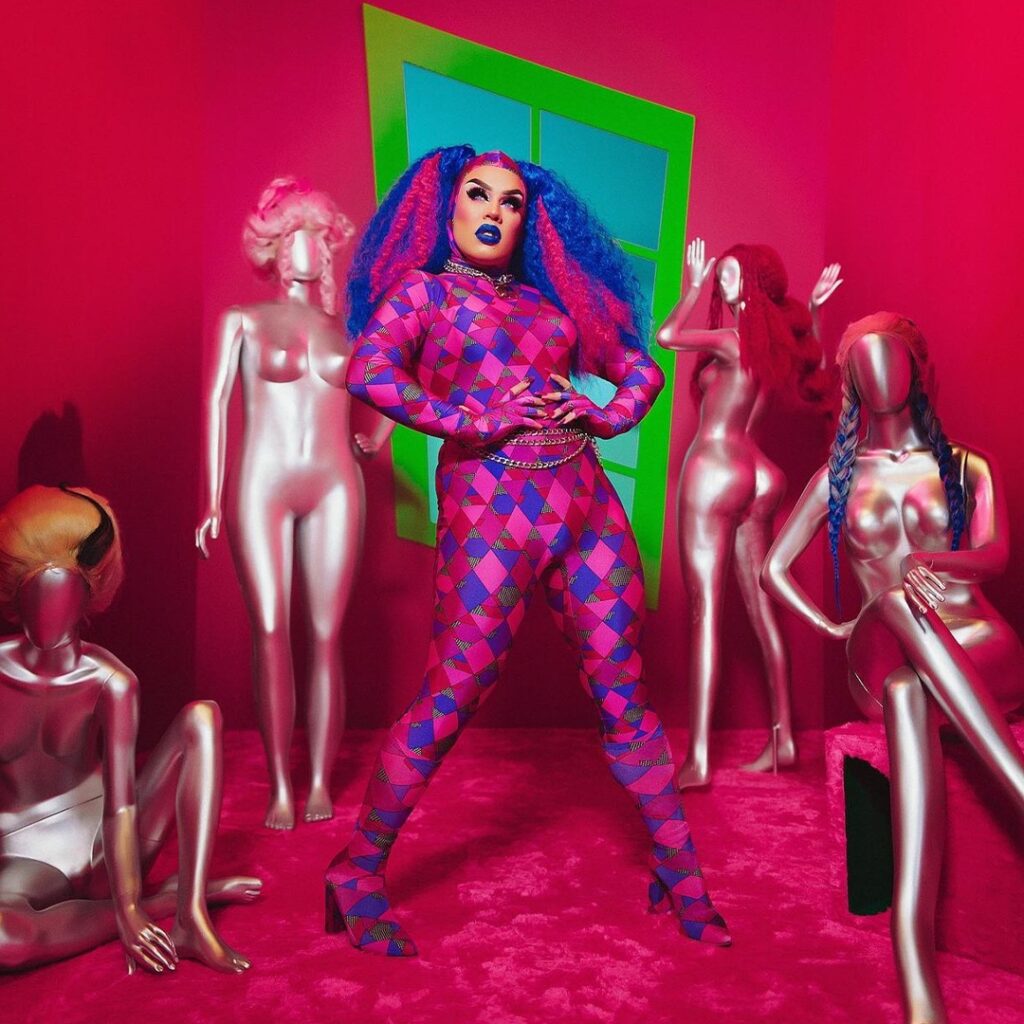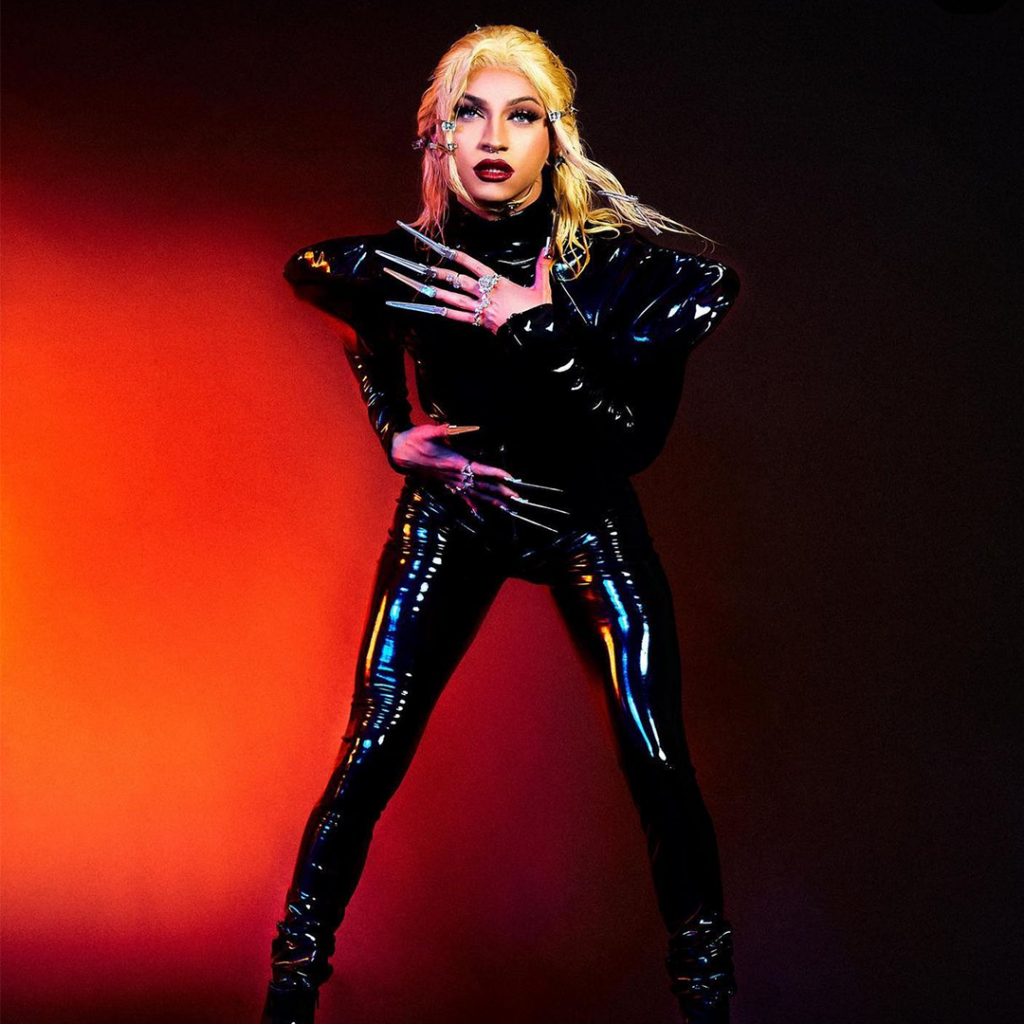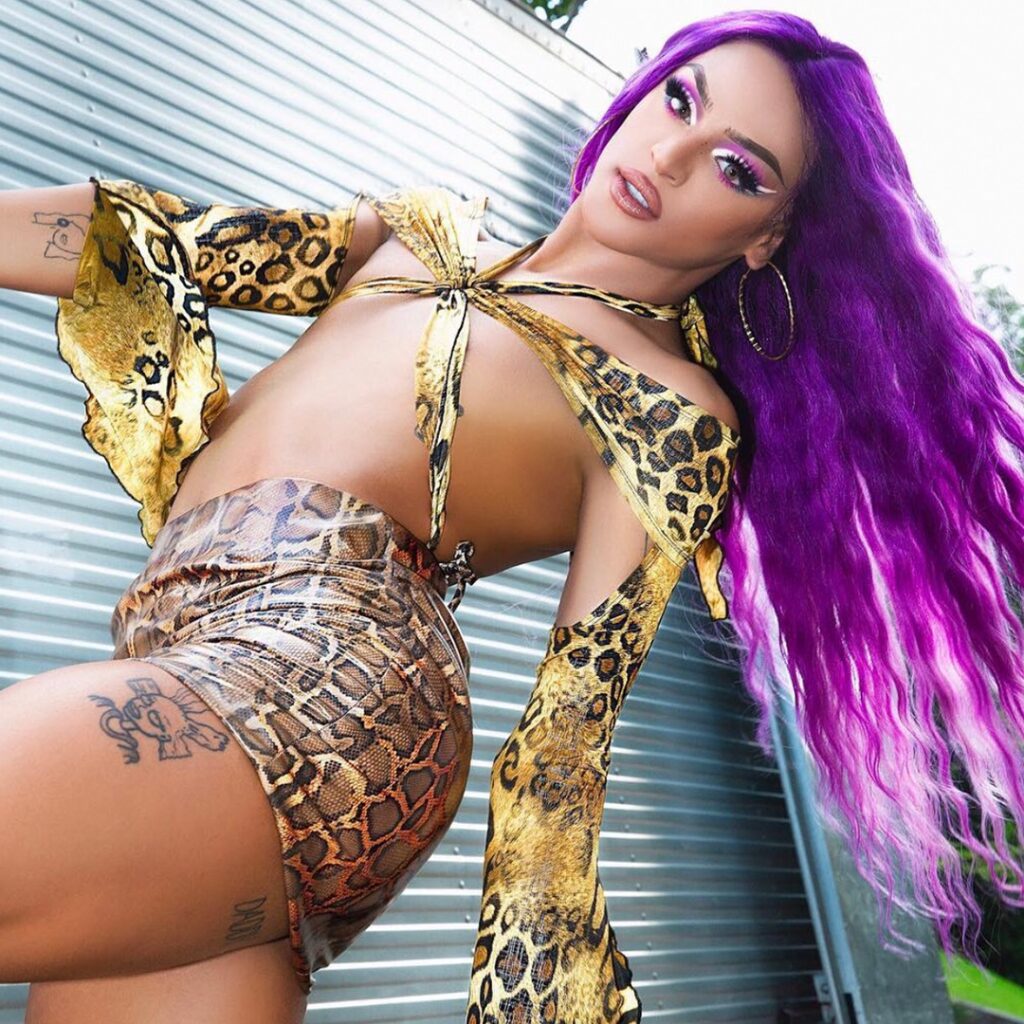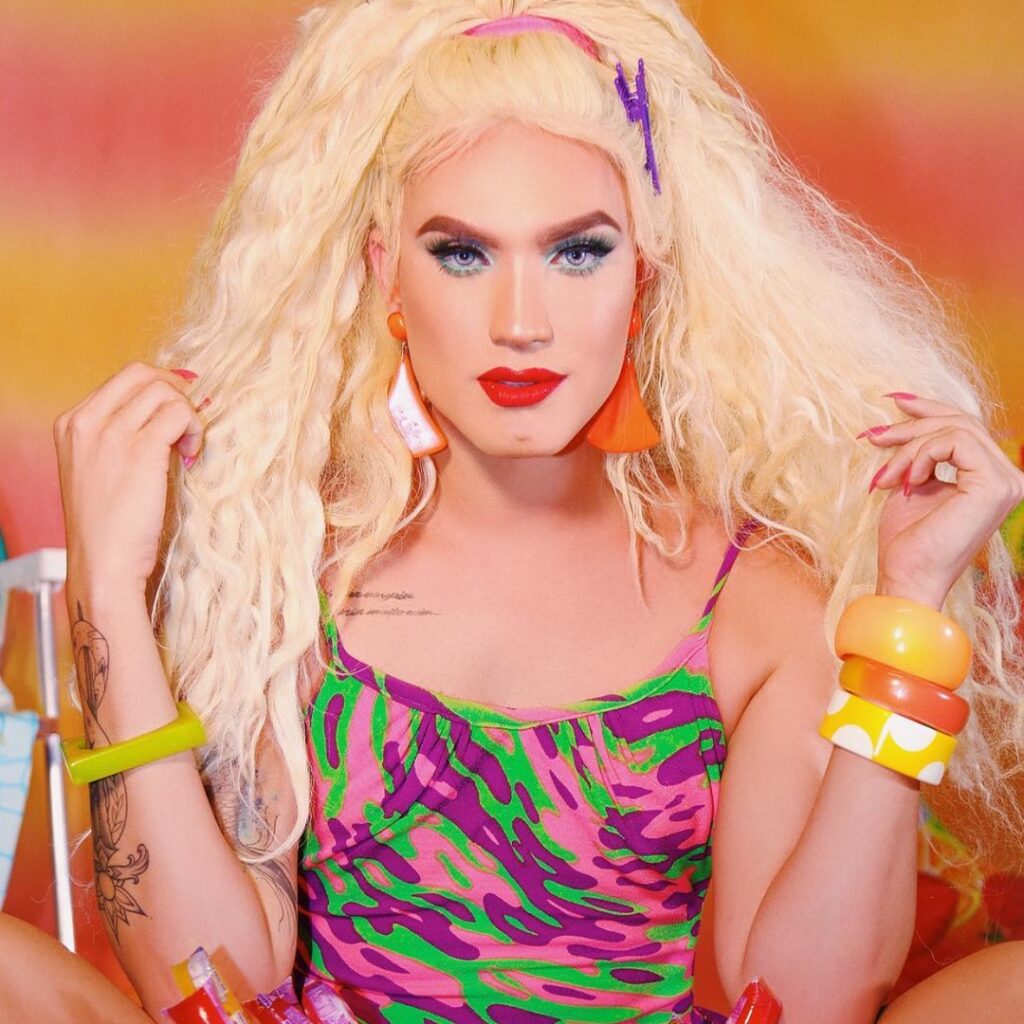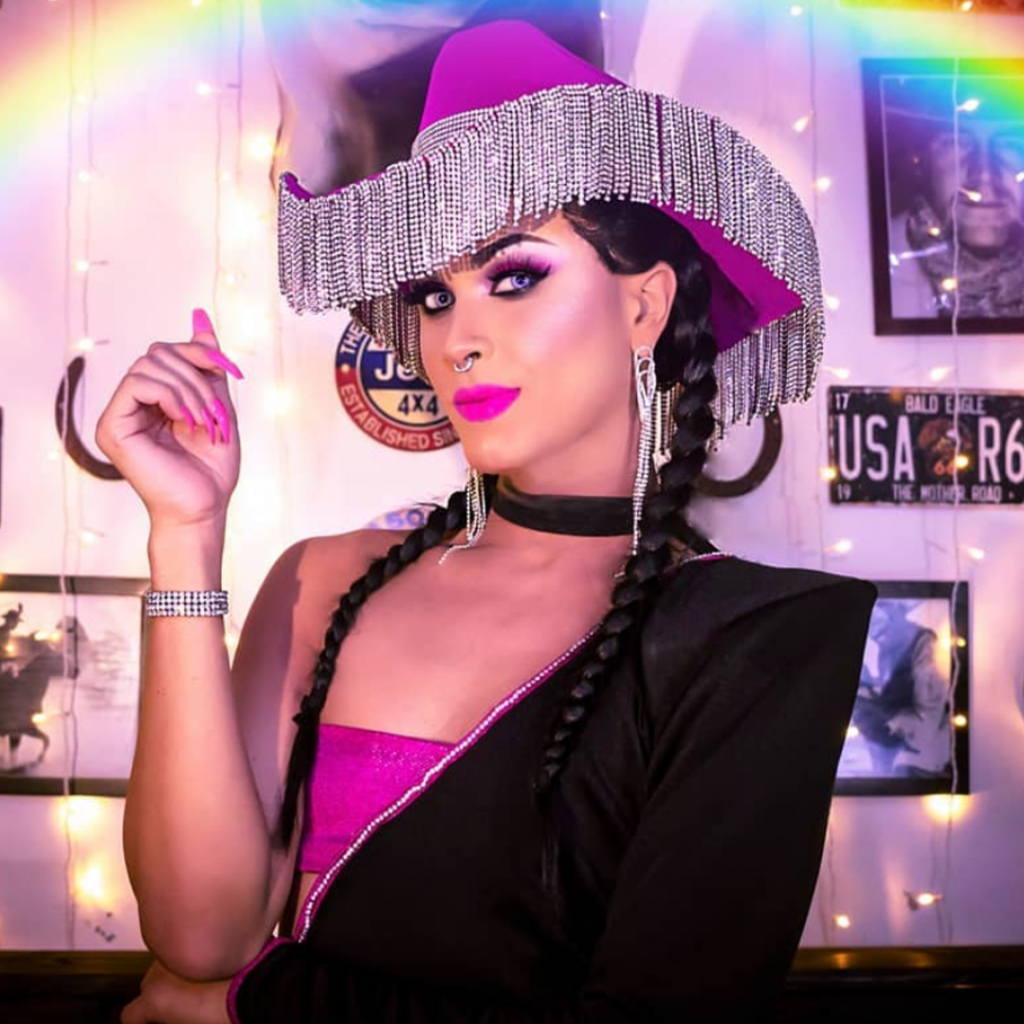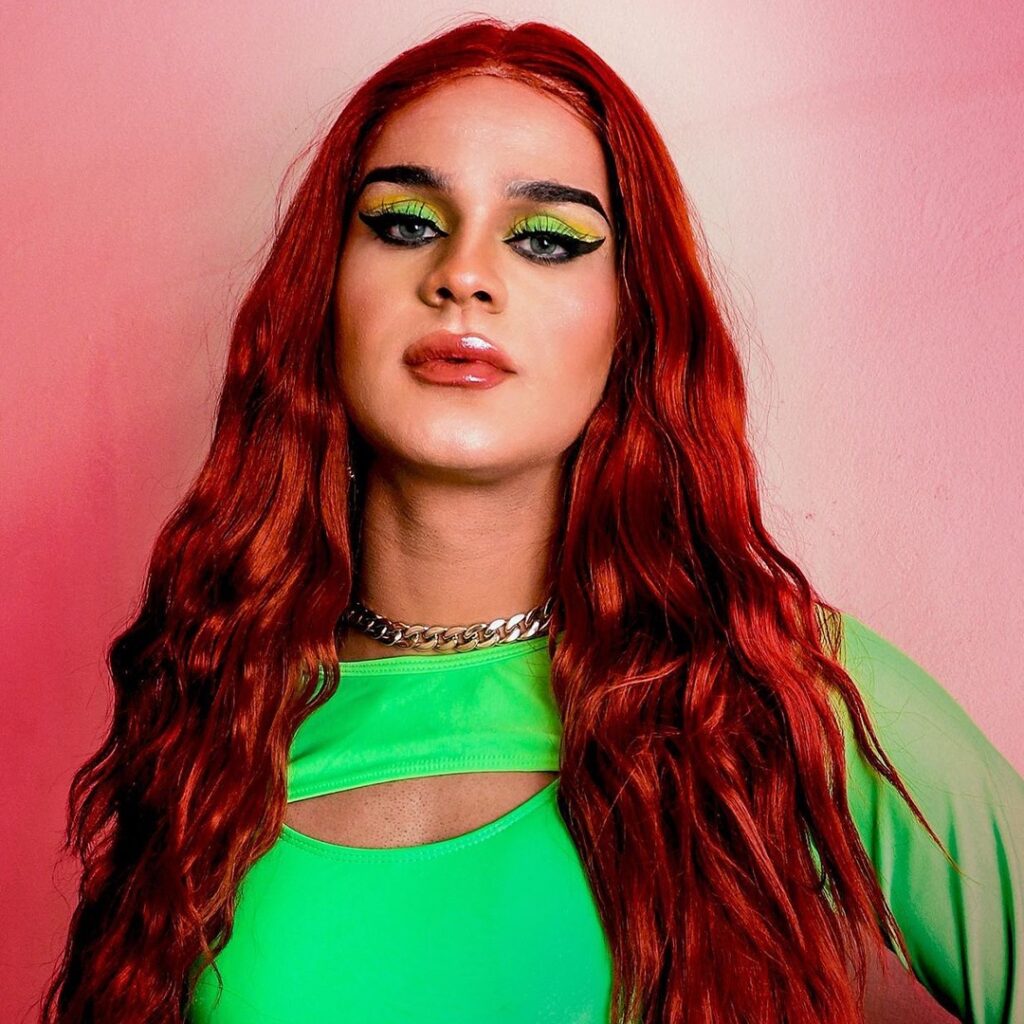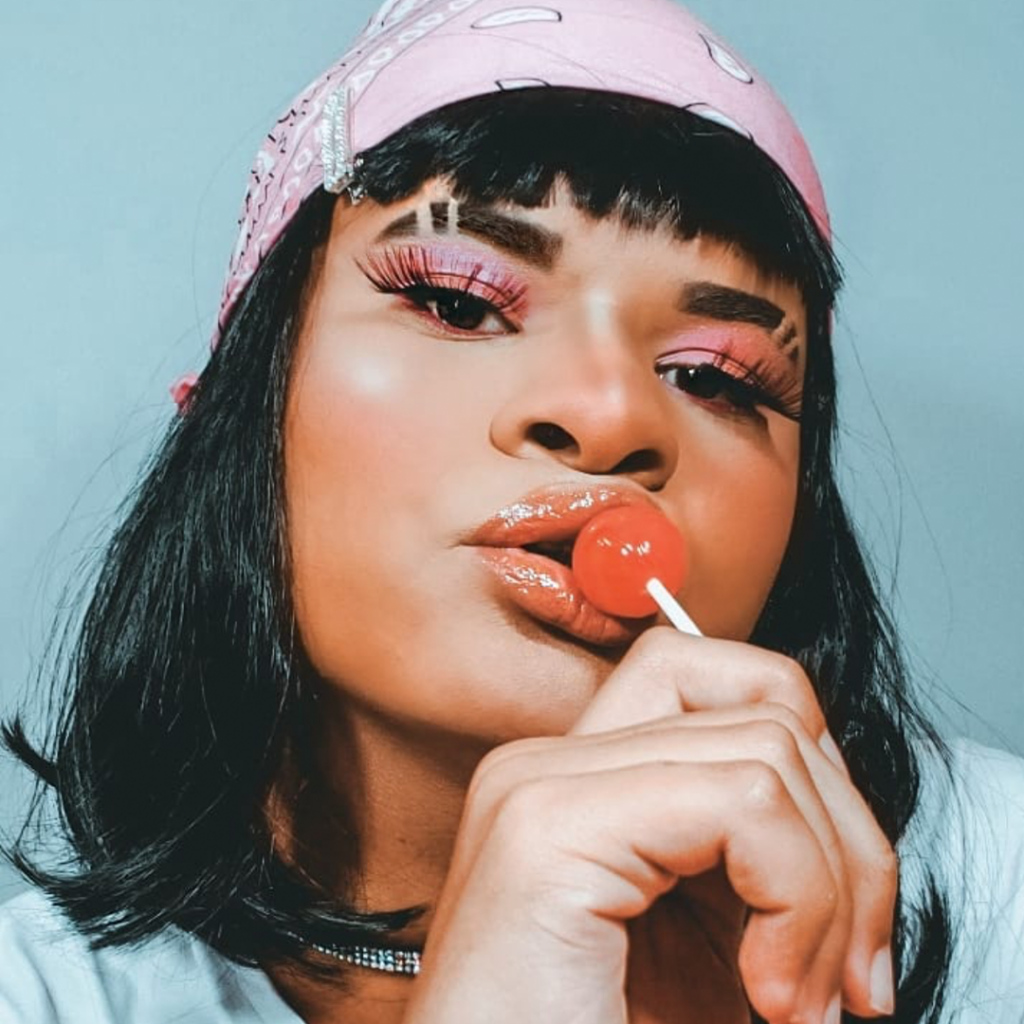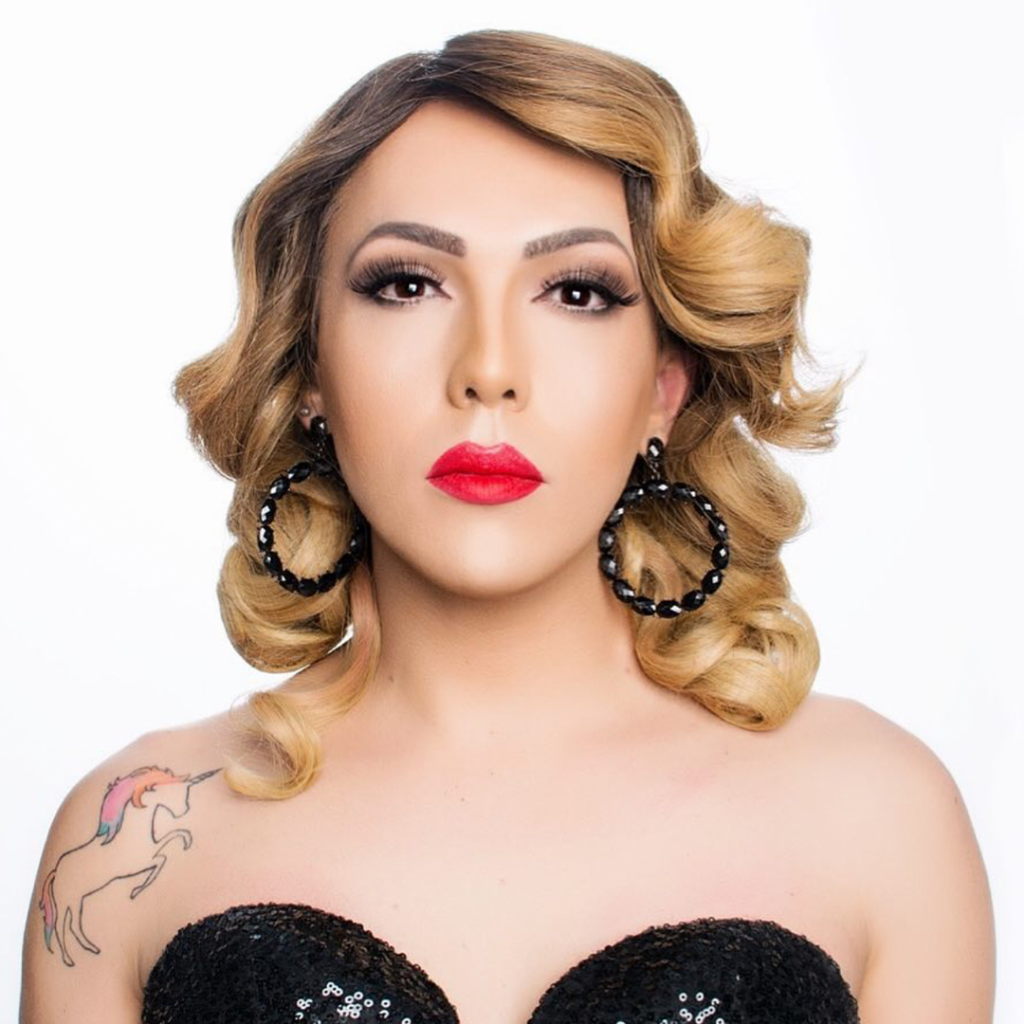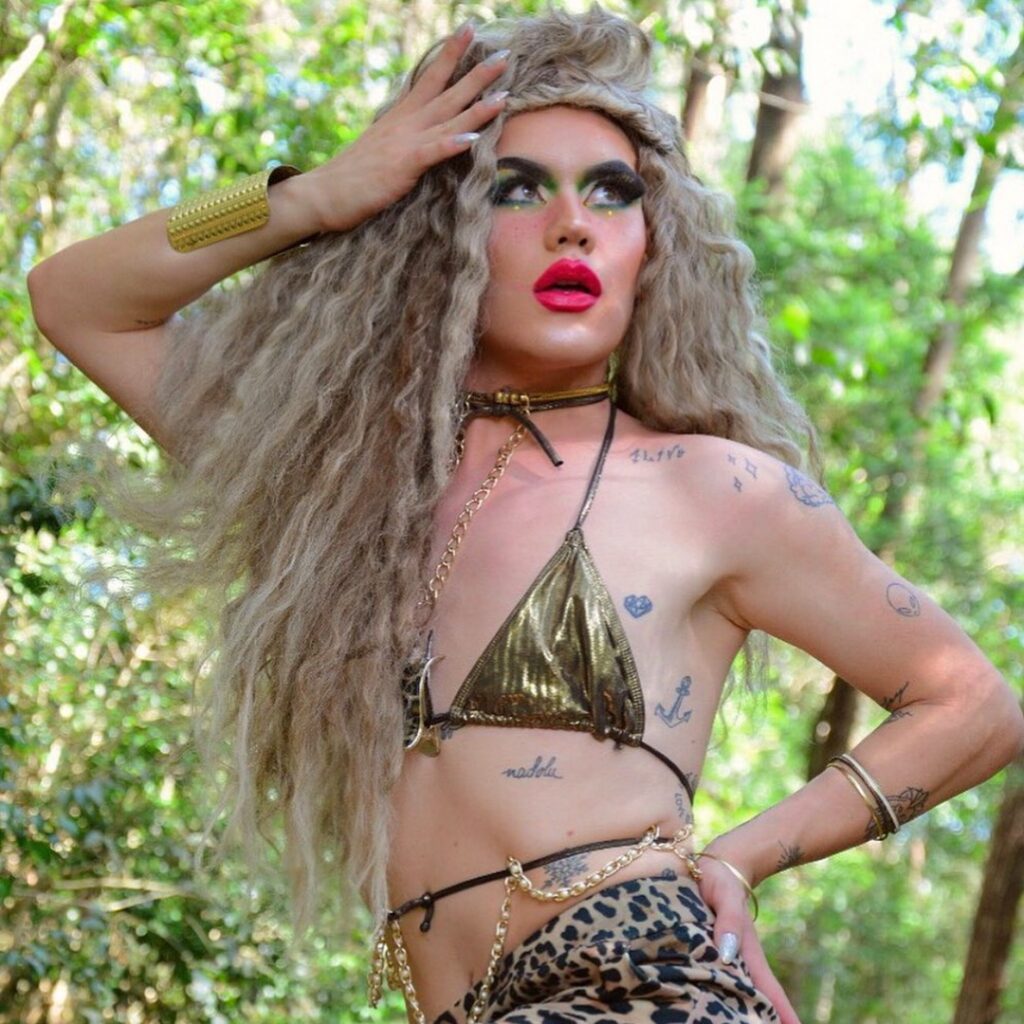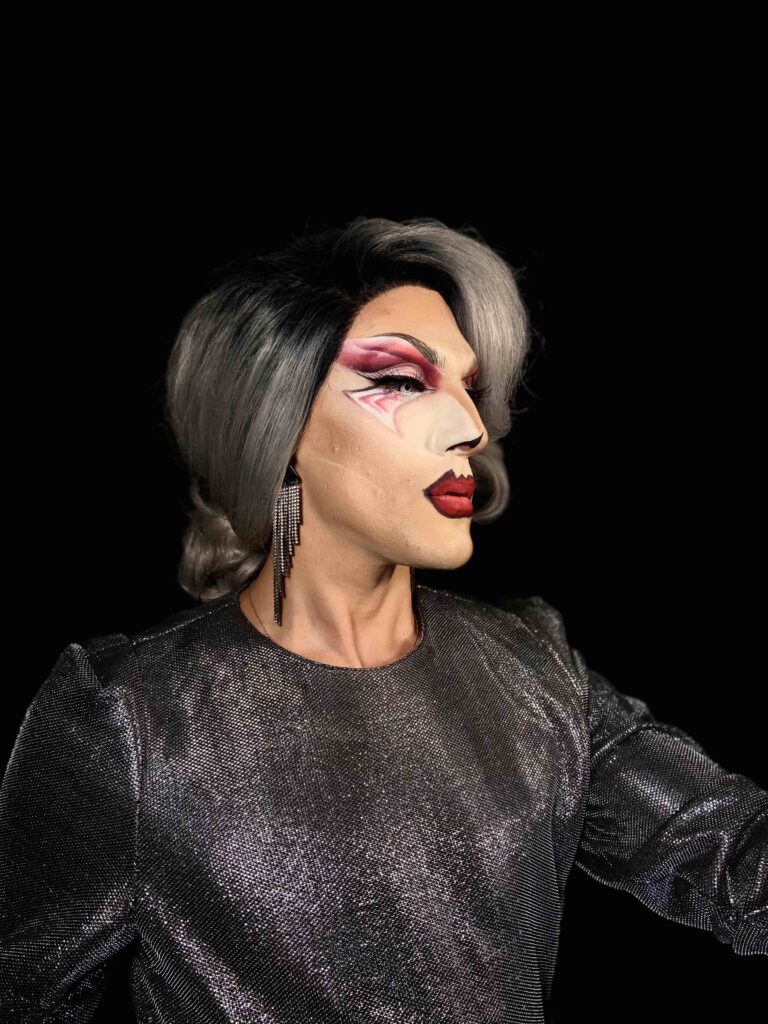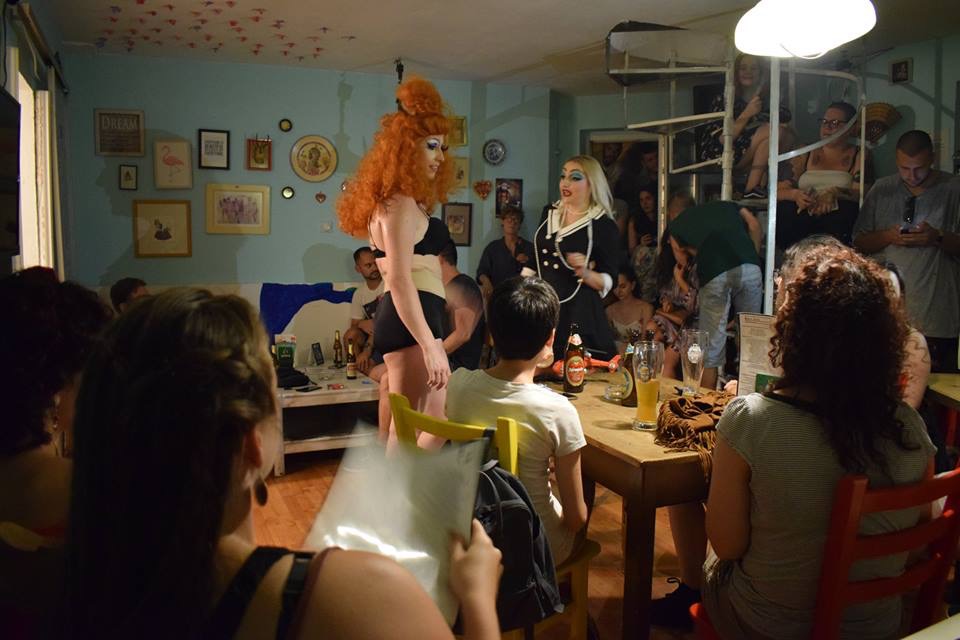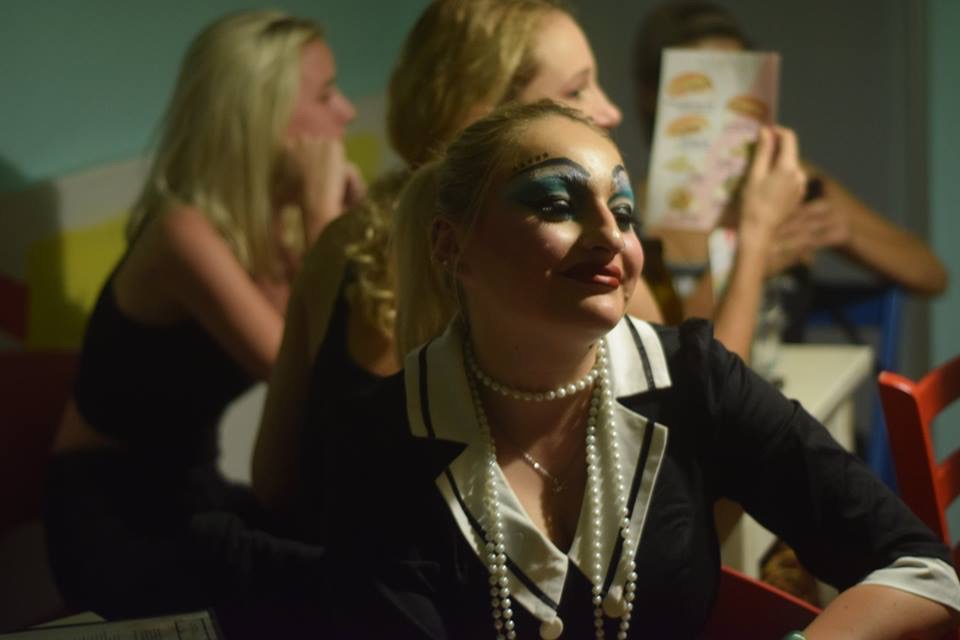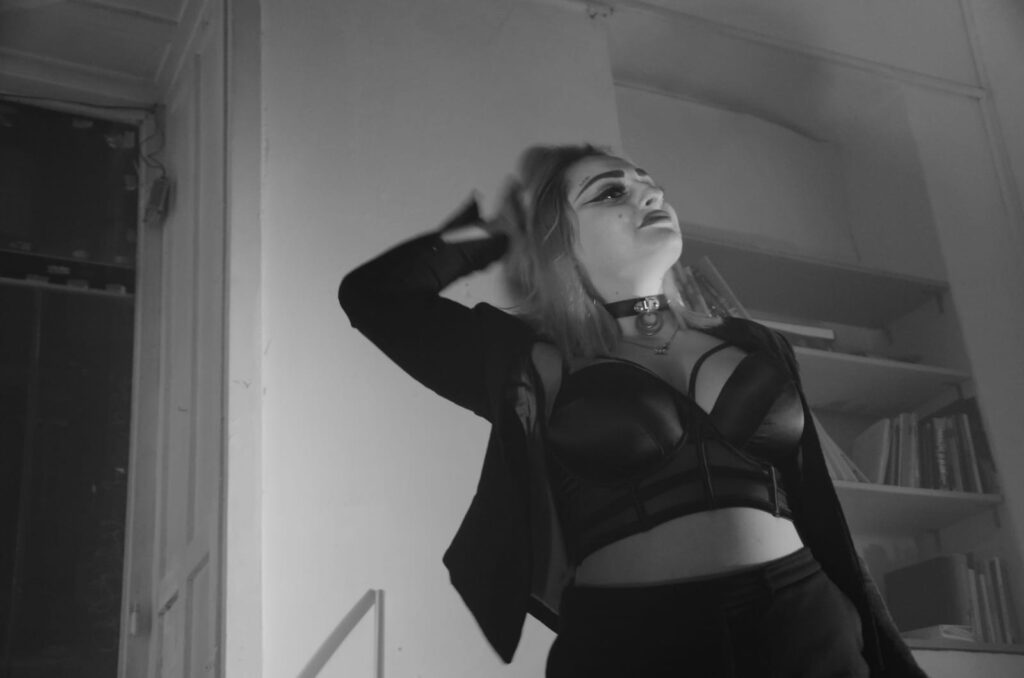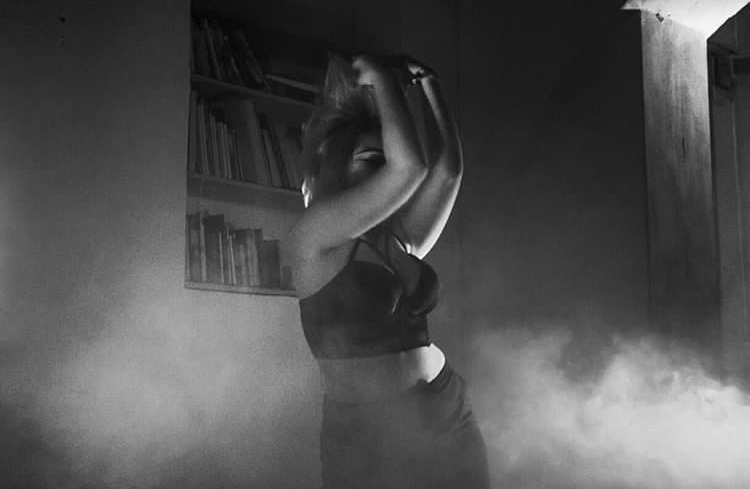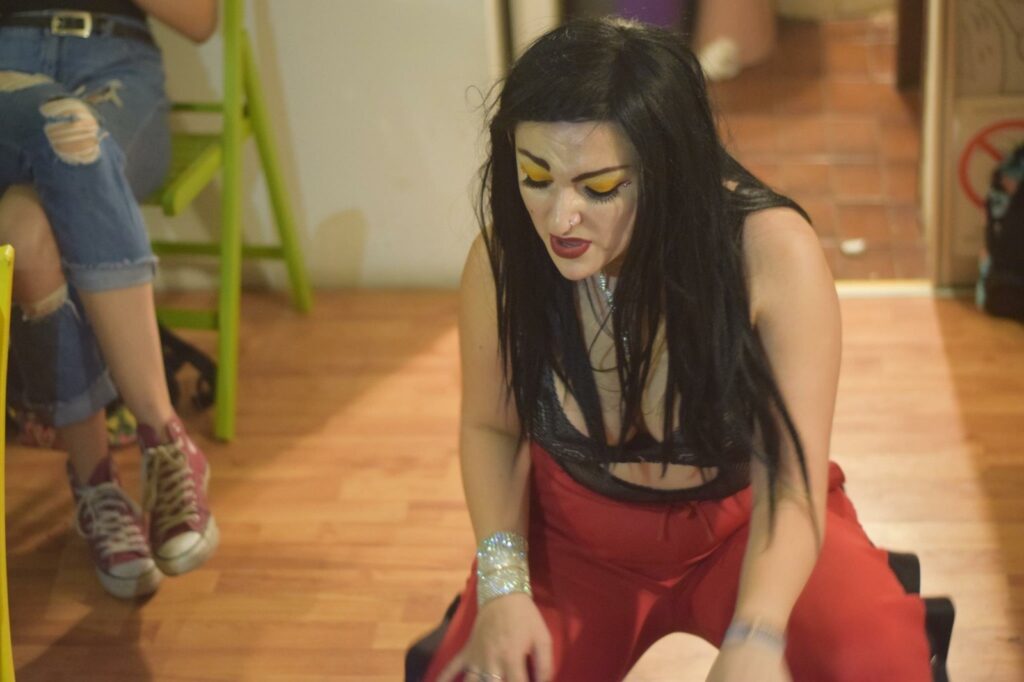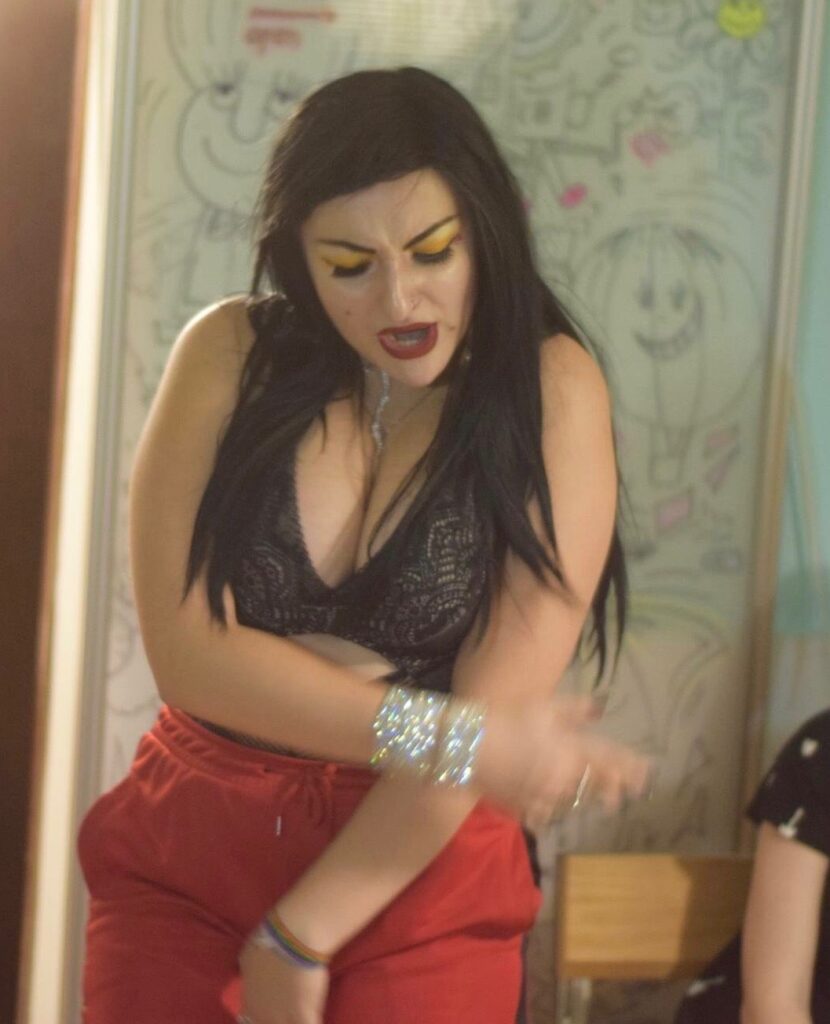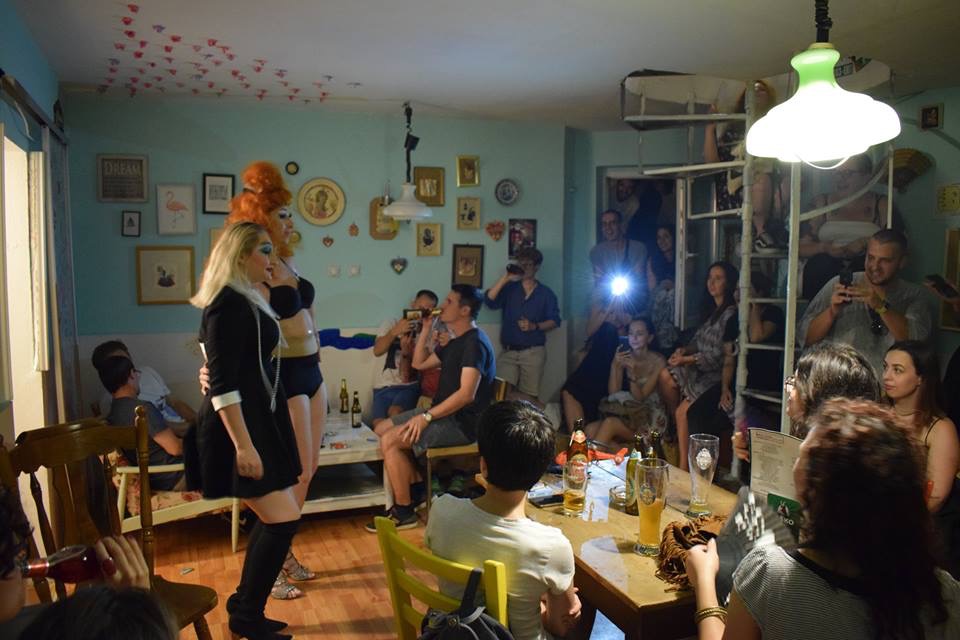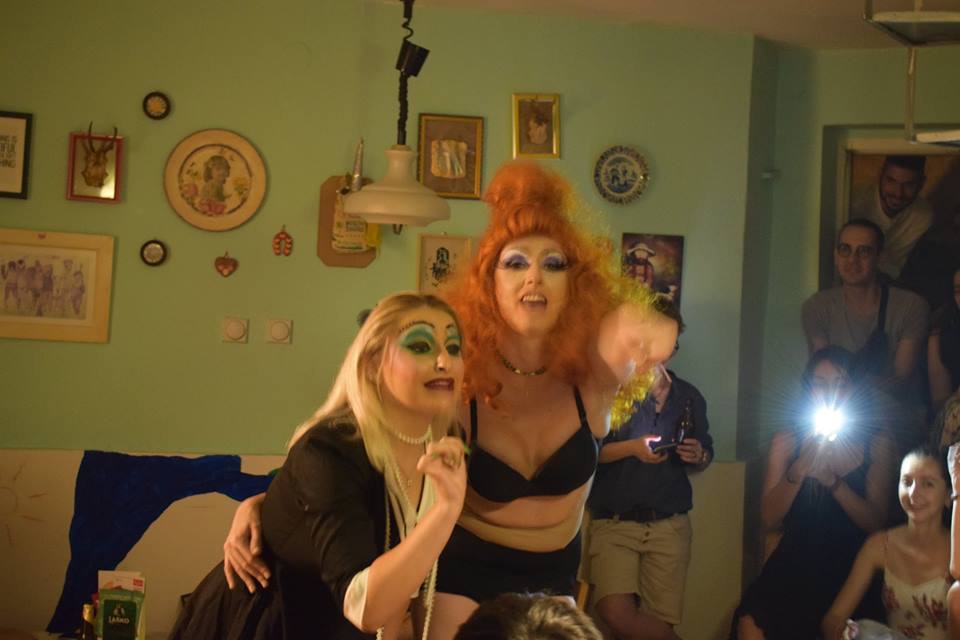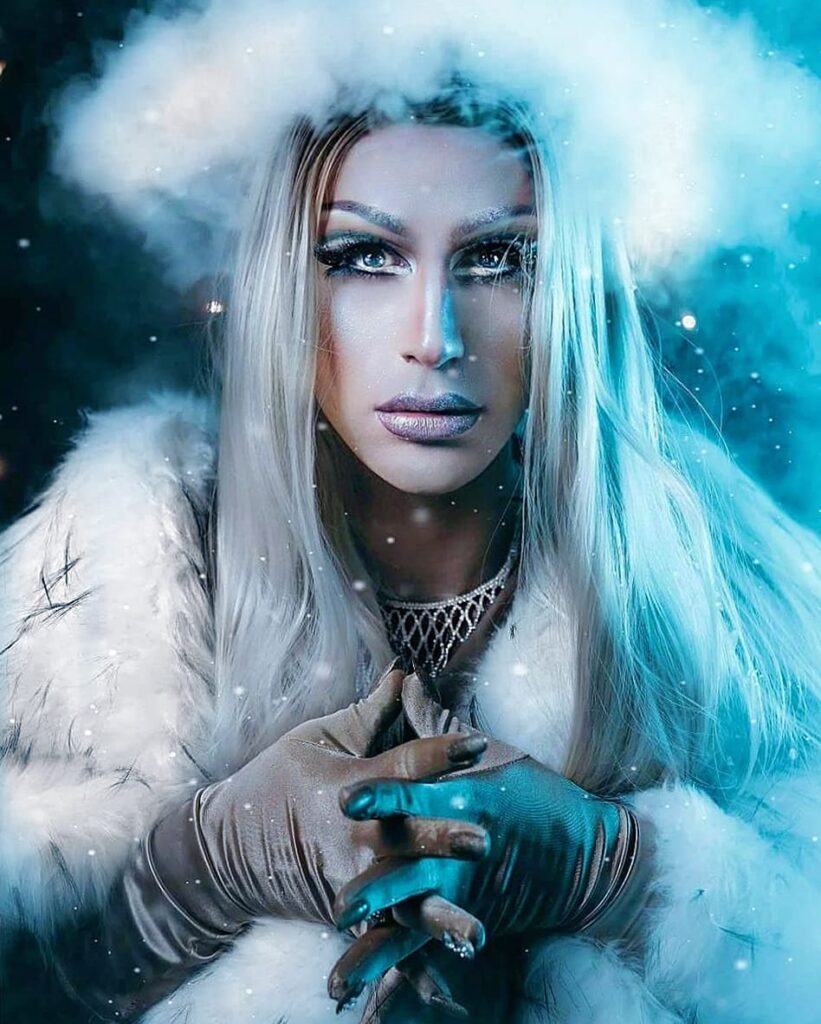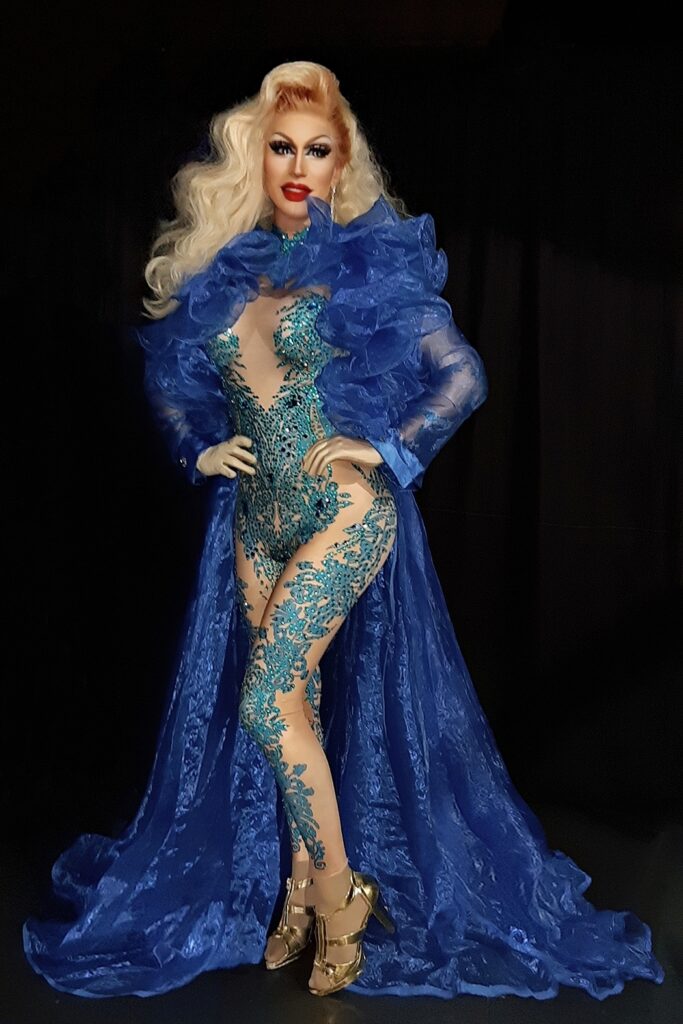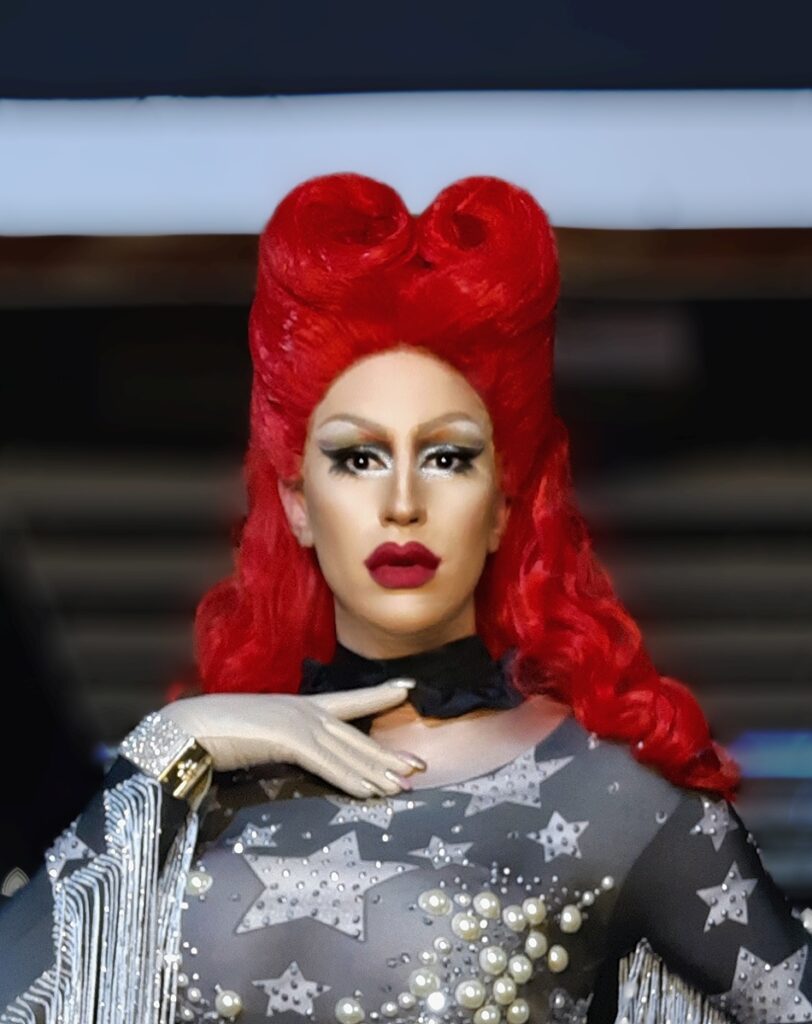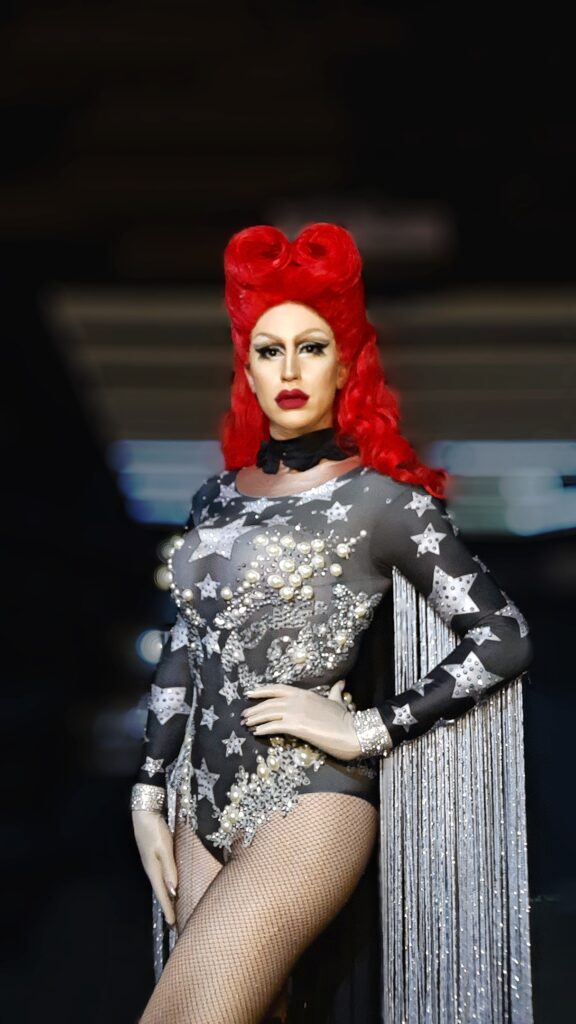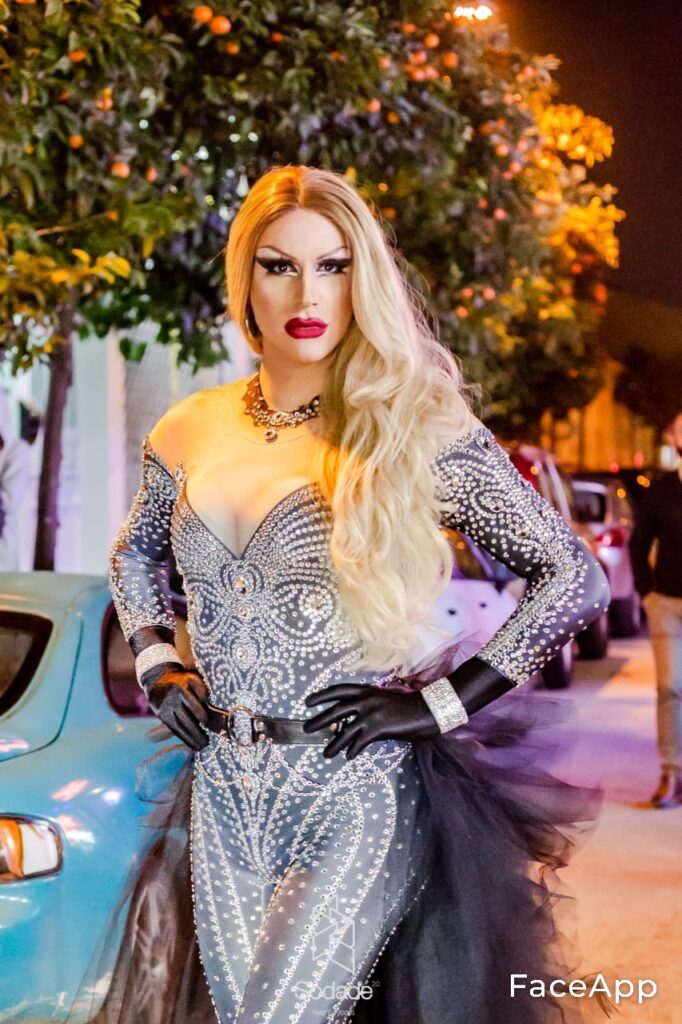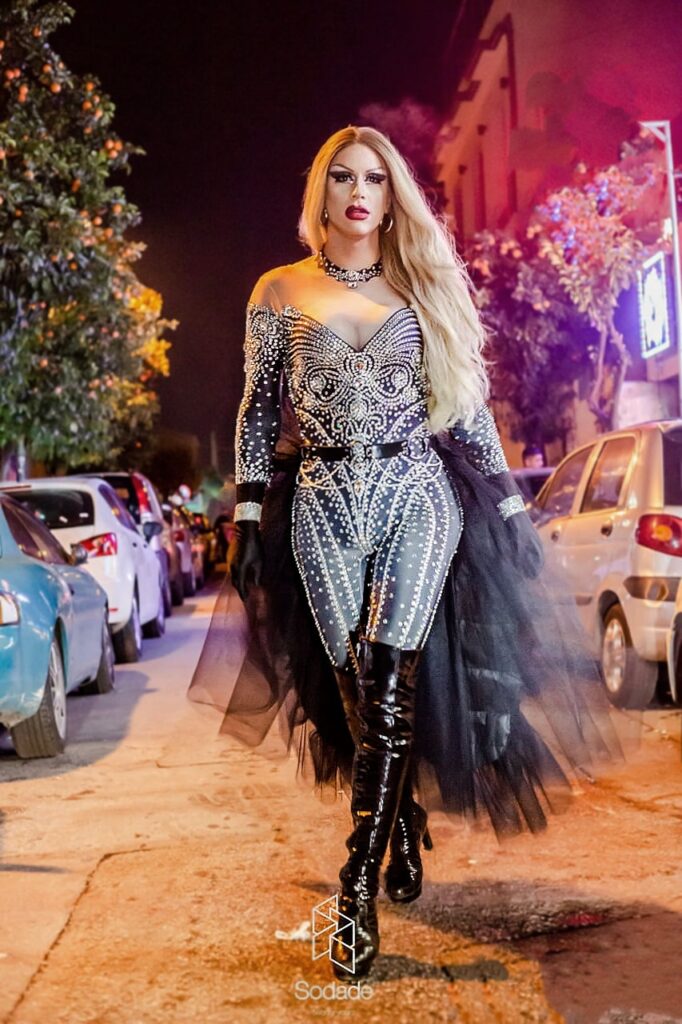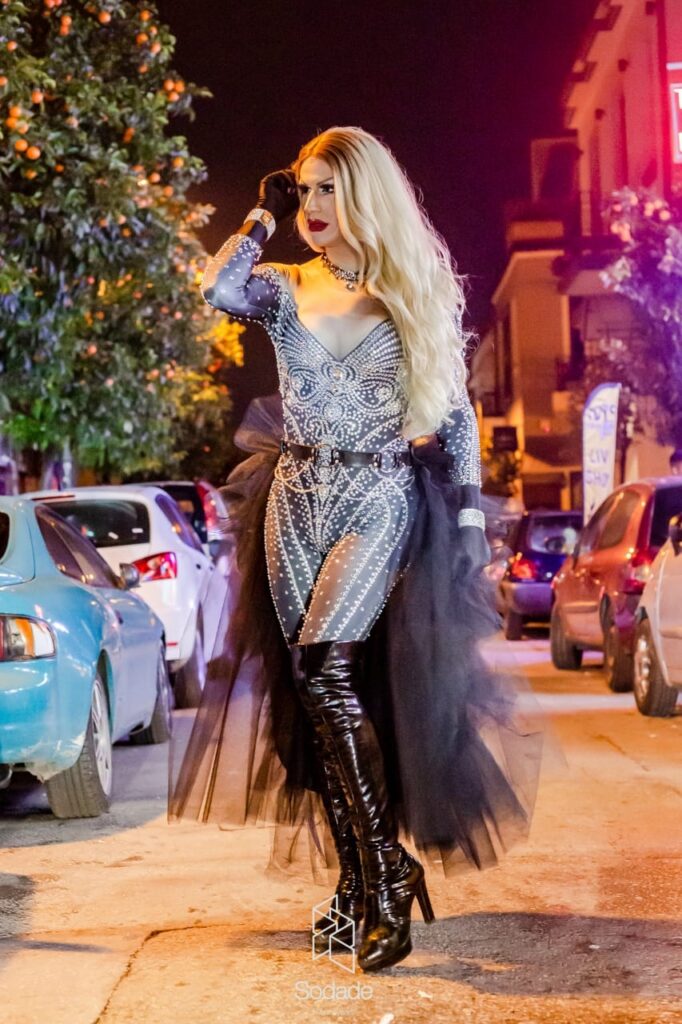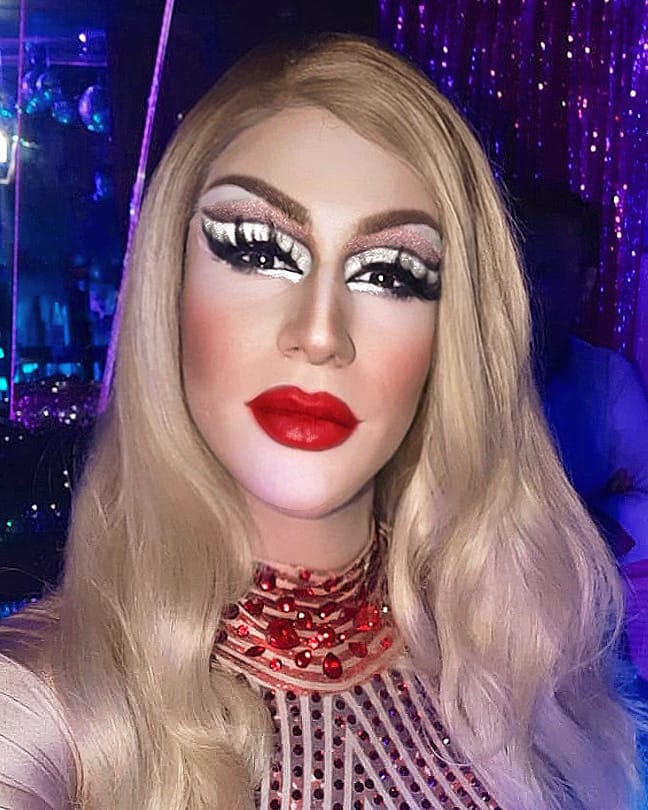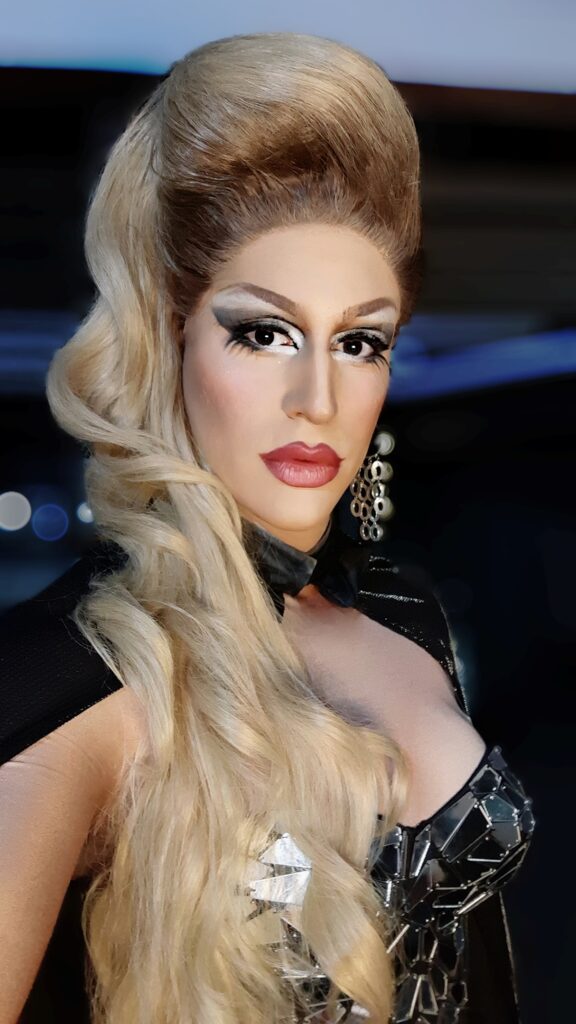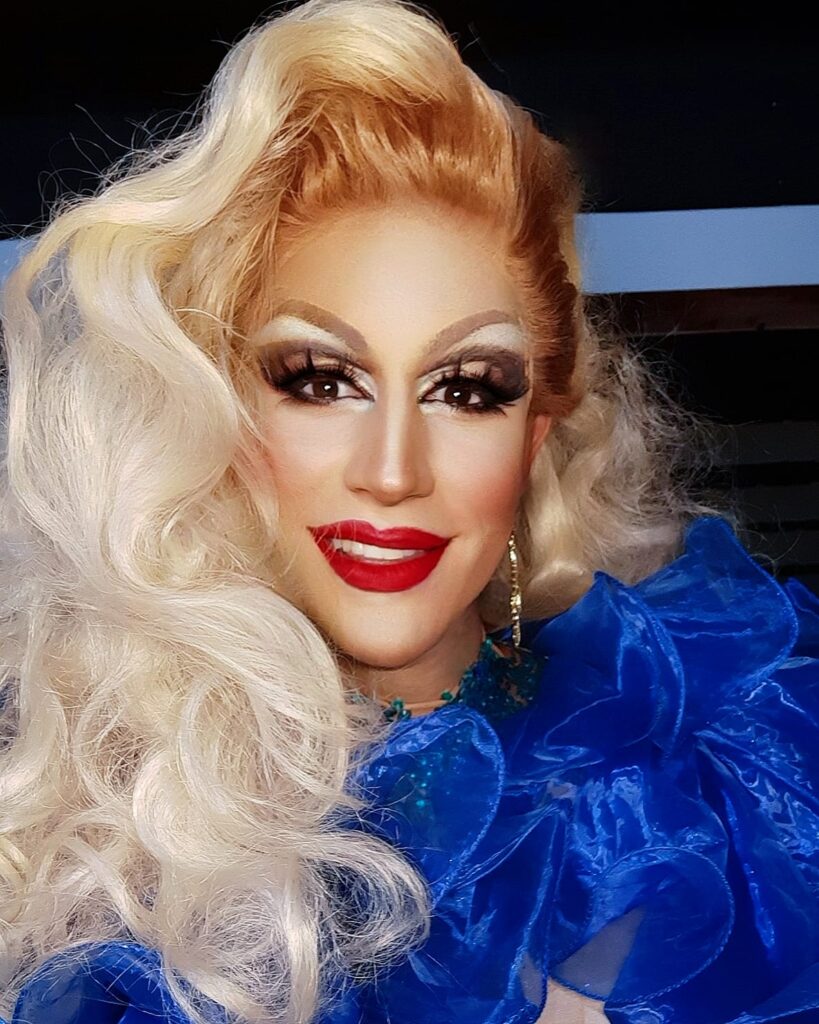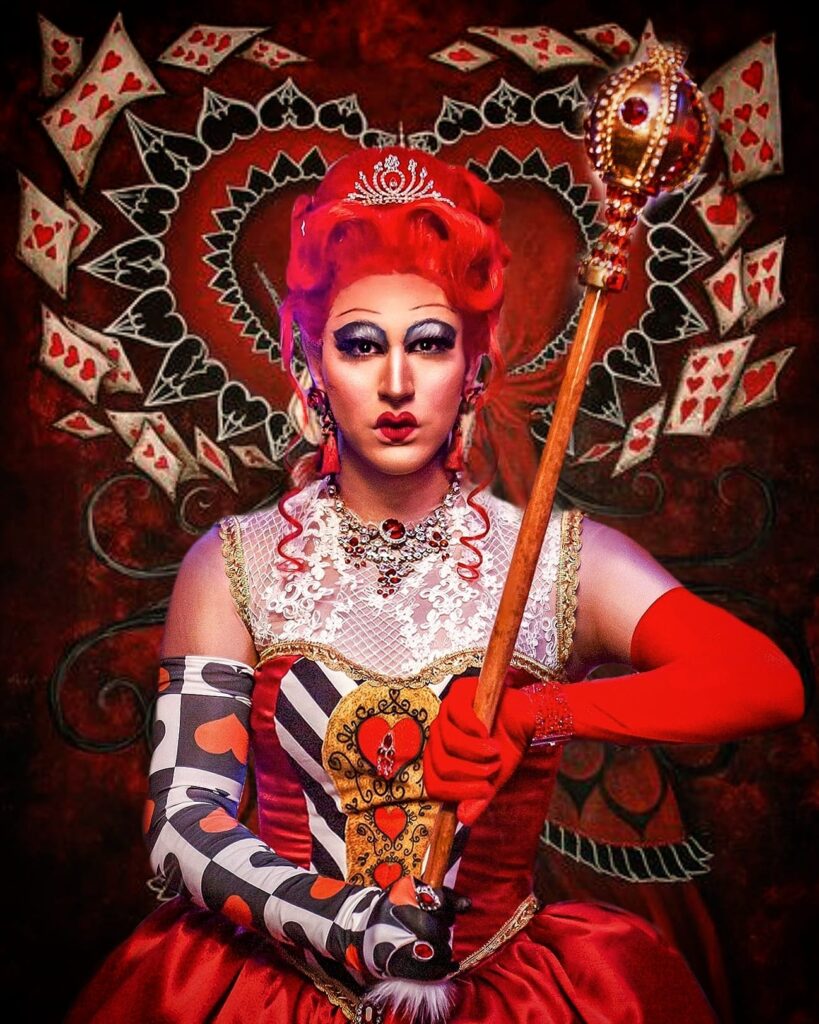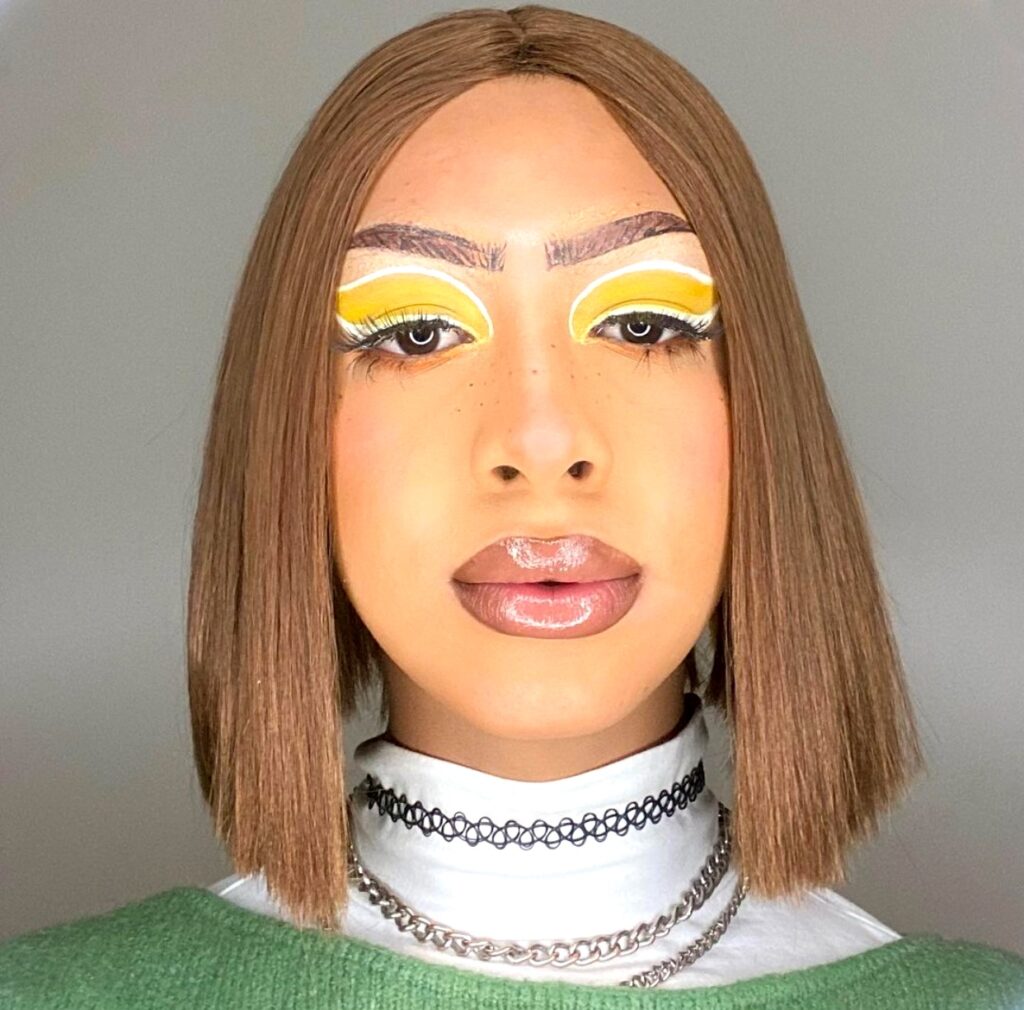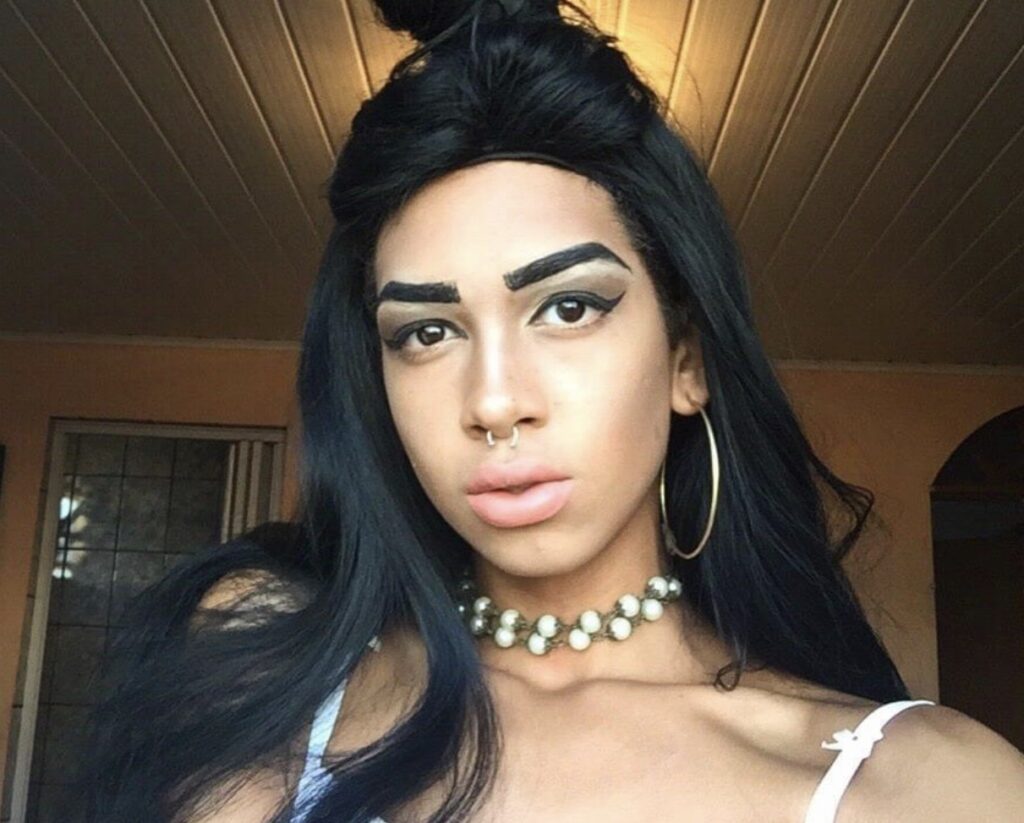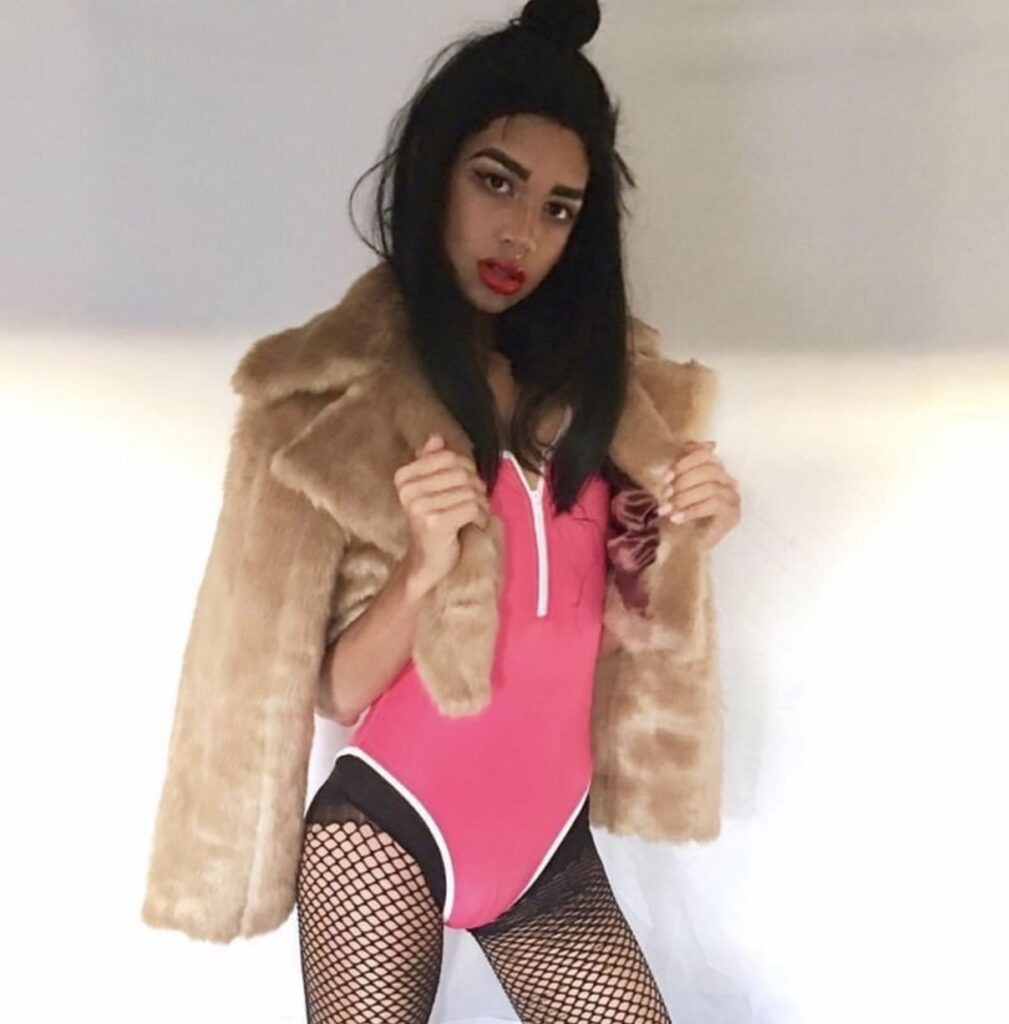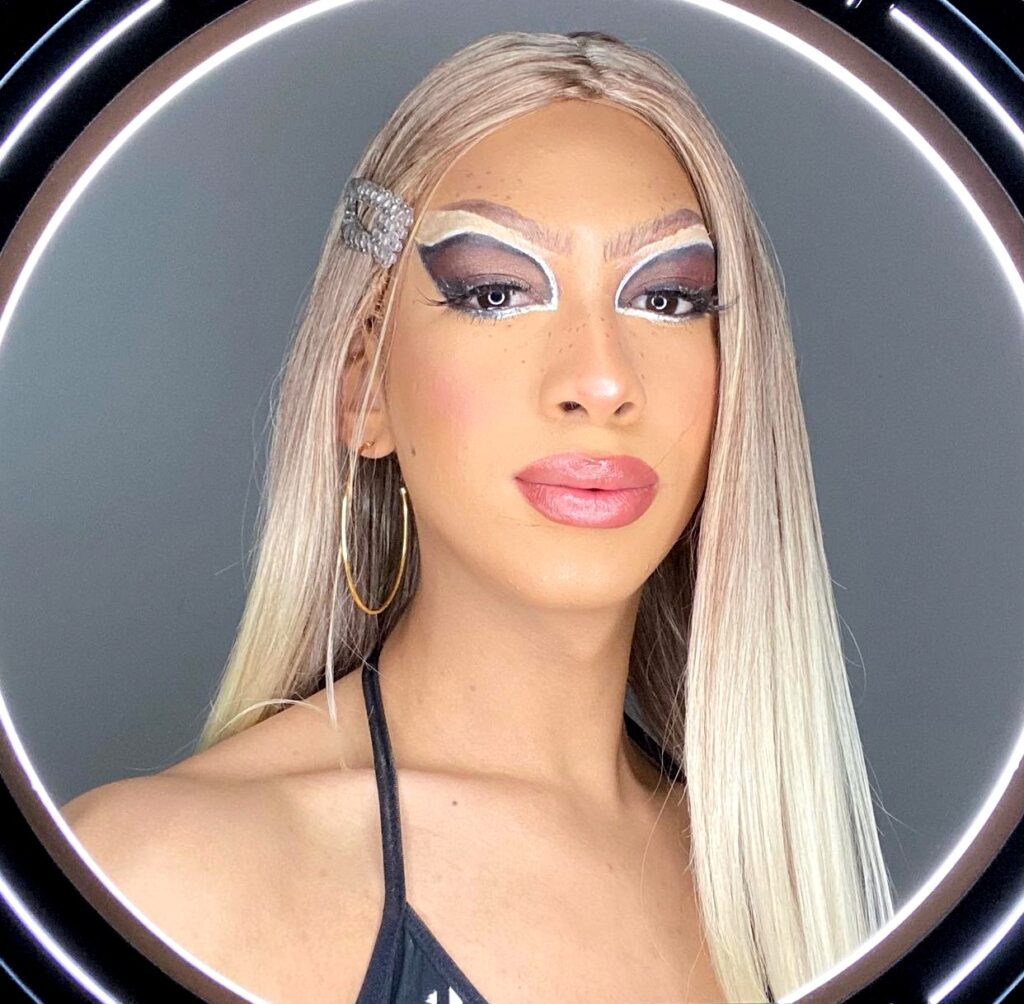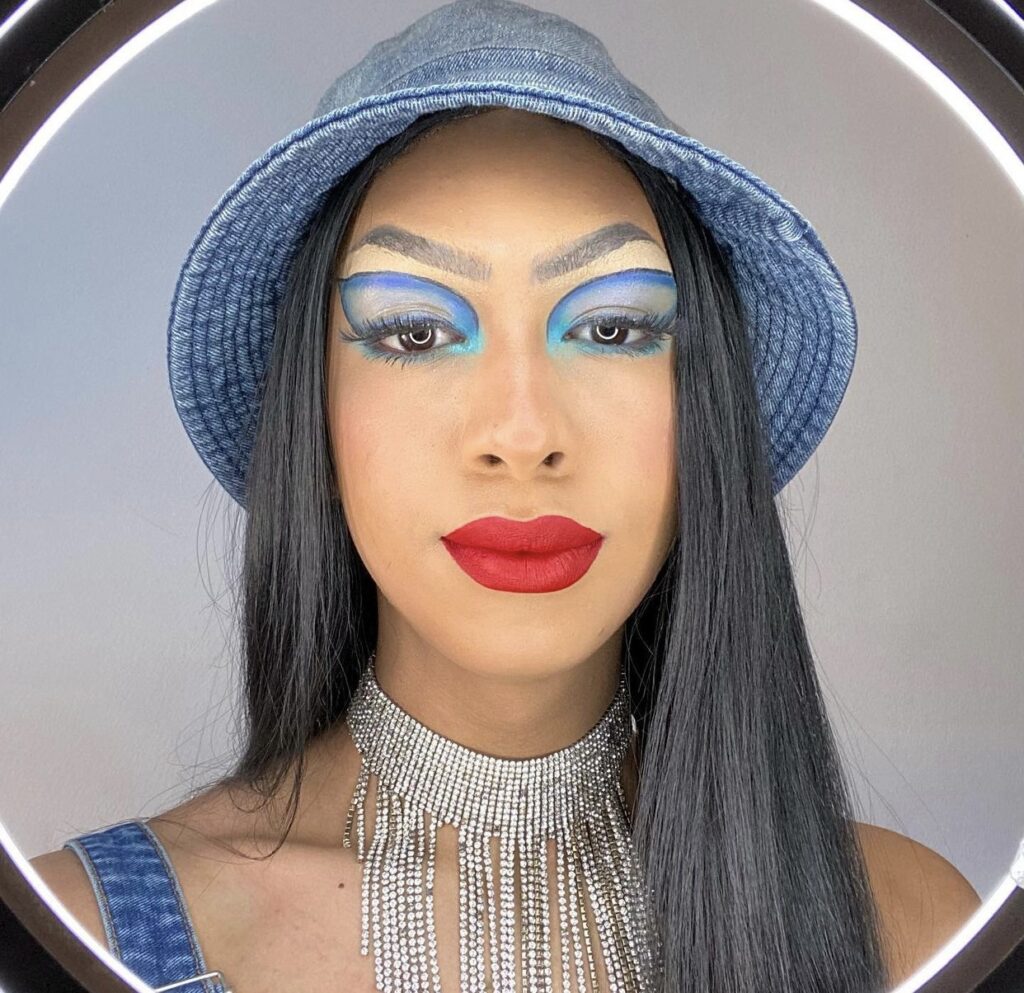Dive into Pasta Parisa’s fabulous closet and discover the inspiration behind 3 fashionable outfits. Stay seated to watch her rock them in her own at-home studio!
Tag: Drag queen
Remembering Remarkable Queens

Some queens go beyond their wigs, outfits, and flawless makeup to redefining drag, fashion and culture all while challenging stereotypes and stigmas around gender, race and sexuality. Indeed, most of us would feel blessed if we accomplished half of their achievements in our lifetime. Here, at GiGi, we wanted to honour just some of these queens of queens. With so many memorable queens who have roamed this earth and gifted us with their humour, personalities, talent, beauty, and more, it was quite the challenge selecting only four to focus on. Time can’t erase the impact these icons have made and the footprints they have left. Starting with, yours truly, Divine!
Divine
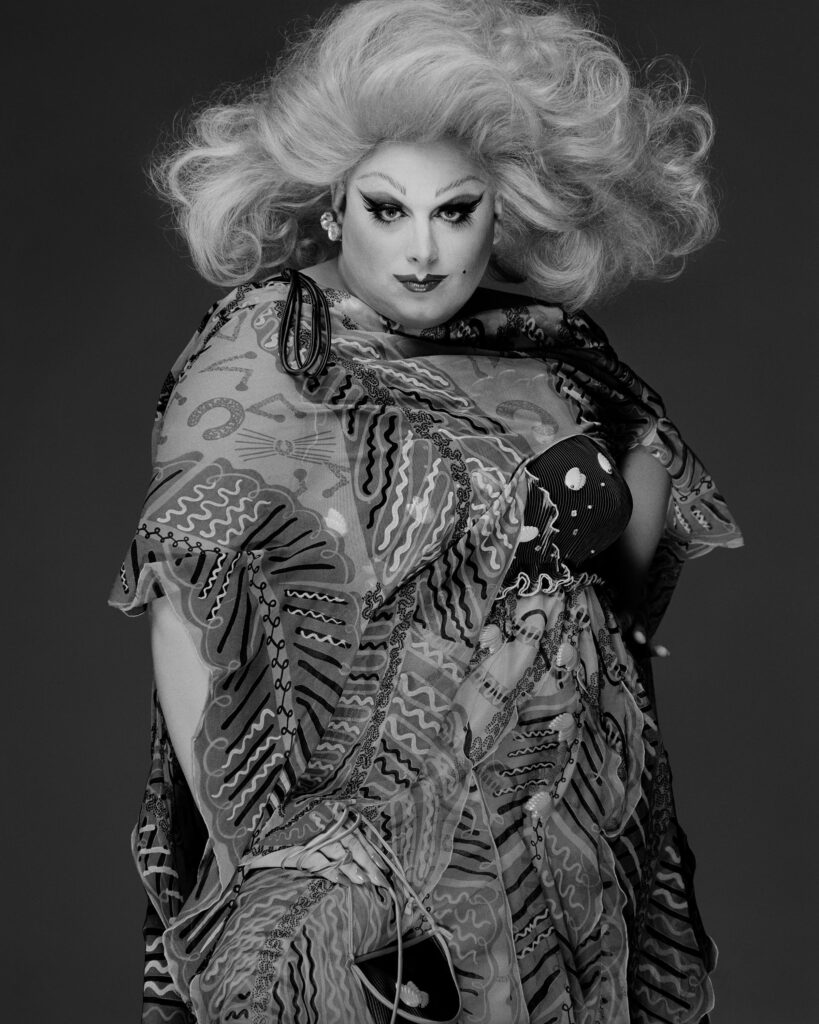

Born Harris Glenn Milstead in 1945, Baltimore, and renowned the “drag queen of the century” by People Magazine upon his death in 1988; you may not believe it but in his childhood, Divine was a bit of an outcast and a shy kid. It wasn’t until the age of 16 when he met underground filmmaker John Waters; also known as “The Pope of Trash” according to writer William Burroughs, that Divine flourished. Waters wanted her to be the Godzilla of drag queens, calling her the “most beautiful woman in the world, almost”. Together, this dynamic duo gave rise to transgressive and delightfully trashy films such as Pink Flamingo, Serial Mom, Multiple Maniacs, Hairspray and many other pictures where Divine proved herself to be a talented actress. The queen was also a club performer, successfully producing various singles in the 1970s and 80s such as ‘I’m So Beautiful’ and even appeared on the U.K music show Top of the Pops with her song ‘You Think You’re A Man’.
Divine was iconic, unapologetically big, and self-consciously vulgar. As far as her looks went, it was very in-your-face and aggressive with ostentatious makeup looks and outfits that flaunted her curves; redefining the conventions of drag and challenging who was allowed to perform gender and how. “Divine took a bigger-than-life character… I think she made RuPaul possible,” says Film Historian George Figgs in Divine’s 1998 documentary. Similarly, in Harper’s Bazaar, drag queen Psycadella Facade speculates how we could’ve had Divine’s Drag Race instead of RuPaul’s had Divine’s success not been cut short. At only 42 years old, in 1988, Divine was found dead at the Regency Plaza Hotel in Los Angeles from a heart attack.
Although Divine considered herself more of an actor than a drag queen, her influence was ample. Not only did she fearlessly shift drag from beauty pageant styles, but she also was the inspiration for the villain, Ursula, from Little Mermaid– very few of us can say they have a Disney character influenced by them. Divine is even displayed as a 10-foot statue in the American Museum of Visionary Art in Baltimore. She is a legend with one hell of a personality who daringly paved the way for many queens to come. She is simply, and truly divine.
Marsha P. Johnson
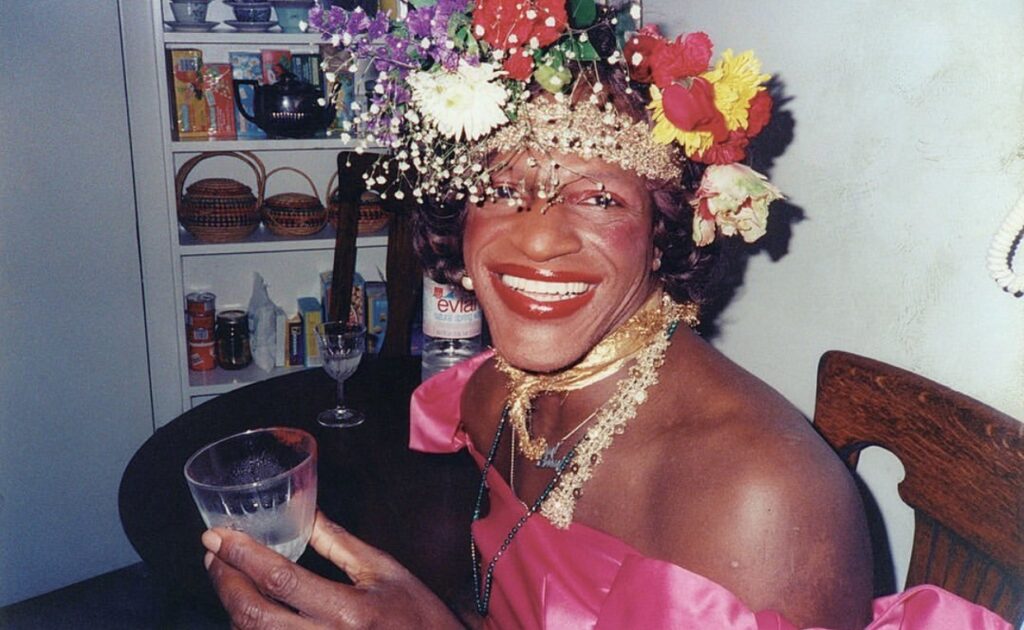

Born Malcolm Michaels Jr. in 1945, New Jersey, Marsha was and continues to be a prominent figure in the LGBTQIA+ community. As an outspoken advocate of gay rights in the 1969 Stonewall uprising, she’s considered by many as the forefront of the gay liberation movement in the United States. She is also the co-founder of the Street Transvestite Action Revolutionaries (STAR), helping homeless transgender youth.
In addition to being an activist, Johnson was also a drag queen, sex worker and a prevalent part of street life in New York’s Greenwich Village where she relocated in 1966 to find herself, with one bag of clothes and $15 dollars to her name. During this transition period, she was initially referred to as Malcolm and Black Marsha. Later, she settled on Marsha P. Johnson, the “P” standing for “Pay It No Mind”; a phrase she used when asked about her gender as a gender-nonconforming individual during a time where this was not widespread or acceptable.
With a liking for feminine clothing since she was five years old, Marsha found tremendous joy in being a drag queen, quickly establishing her presence in the village through her vibrant outfits which she would tend to scavenge for in rubbish bins. She was usually seen wearing bright red heels, colorful wigs rendered with artificial fruits and flowers sourced from the streets of Manhattan’s Flower District, stacks of jewelry and glittering dresses. She occasionally performed on stage in ‘high drag’, but primarily in grassroots groups such as the drag performance group Hot Peaches whom she successfully toured the world with.
Marsha’s body was found in the Hudson River in 1992, soon after the Pride parade. Initially ruled as a suicide, the case has been reopened as a possible murder. Despite her tragic death, her legacy lives on and her story of determination in the face of oppression echoes to this day.
“I’d like to let you know Marsha, that your fire never went out. I see it on the streets, in the bars and dance floors, on the piers. I see it in the eyes of those who are fearlessly themselves. I see it in black and brown queer and trans people. Marsha, your fire never went out. It spread like wildfire and set us ablaze. I will fight for you forever, Marsha,” says West Dakota, a Brooklyn-based drag queen said to possess a star quality to rival Lady Gaga, according to Vogue.
Mario Montez
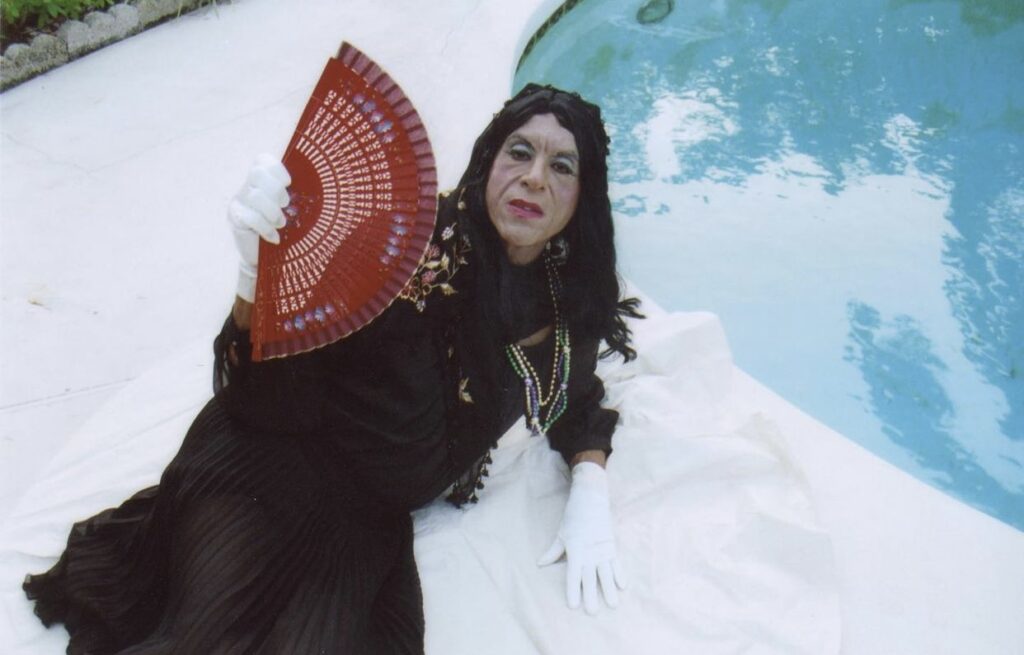

Born René Rivera in 1935, Puerto Rico, but New York made, Mario Montez, whose name is a homage to the iconic Dominican actress, Maria Montez; was a substantial influence in the history of film, theatre, art and queer performance. His poised and glamorous drag made him a successful figure in the avant-garde, camp, and underground film culture in the 60s, becoming a fixture in films by Andy Warhol as his first drag “superstar” and a favourite of artist Jack Smith.
Presented with a lifetime achievement award in queer film by the Berlin International Film Festival and crowned “the great drag superstar,” Montez was a sought-after actor, making appearances in 13 films by Andy Warhol such as Harlot, Camp, More Milk, Yvette and The Chelsea Girls as well as in Flaming Creatures and the unfinished film, Normal Love by Jack Smith. Other features included films by Puerto Rican filmmaker José Rodríguez-Soltero and Brazilian visual artist Hélio Oiticica.
As a member of Charles Ludlam’s Ridiculous Theater Company, Montez would design and make costumes for himself as well as other cast members by refashioning clothing found at thrift shops and trash piles which he labelled, “Montez Creations”. On stage, he was known for his timely humour, over-the-top acting and versatility in capturing the essence of femininity independent of what role he was playing. “Whether he is playing The Wife, The Mother, The Whore or The Virgin, Montez captures the ineffable essence of femininity,” says Charles Ludlam, founder of the Ridiculous Theatrical Company.
Although Montez performed in drag, as a devout Roman Catholic, his relationship with drag was an intricate one, calling it “going into costume” and being fearful of revealing this to his family. According to Warhol in the book, Popism, “The only spiritual comfort he allowed himself was the logic that even though God surely didn’t like him for going into drag, that still, if he really hated him, he would have struck him dead.”
This queen, fascinated with the Hollywood glitz and considered a royal in the world of underground filmmaking, was every inch a star, one which shines to this day. Bringing drag to the theatre as well as representation for Latinos in the US cinema with his striking performances.
Montez died in 2013 in Key West, Florida, at the age of 78. The cause according to Claire K. Henry, senior curatorial assistant of the Andy Warhol Film Project, was complications of a stroke.
Sylvester

‘The Cockettes; Acid Drag & Sexual Anarchy, 1969-1972’.

Born Sylvester James in 1947, Los Angeles, this queen is the creator of one of disco’s impermeable classics, an everlasting Pride anthem and a groundbreaking hit in Pop history, You Make Me Feel (Mighty Real)’. One of the first openly gender fluid musicians, Sylvester embraced the gender spectrum at a time not particularly warm to the LGBTQIA+ community. His emotive and soaring falsetto voice was rooted in Gospel and Blues, creating a template that was long followed into the future by the Pop industry.
His life as a musician began at a young age during his church choir performances at regional Gospel Music events. Later as a teenager, Sylvester joined The Disquotays, a group of passionate and fearless black teenage drag queens, “somewhere between a street gang and a sorority house,” says a previous member to The Guardian. The group would courageously defy California’s law against public cross-dressing by wandering the streets in full-drag and throwing scandalous parties. They also joined the 1965 Watts riots, a series of violent confrontations by Los Angeles police and residents of Watts, caused by the arrest of an African American man by a white California Highway Patrol officer on suspicion of driving while intoxicated.
Outrageously gay, Sylvester was all about high fashion drama. He flaunted fur coats, satin and disco sequins in his soulful performances where he was known for his movie-like stage entrances. Ironically, he preferred to work with straight musicians as he would say, “There’s only room for one queen in this band and I’m it.” Despite his preference, in 1969 when he moved to San Francisco, Sylvester was invited to join the cabaret troupe, The Cockettes. There, he was given a star spot in one of their revues, signing ‘The Big City Blues’, becoming their main attraction. However, with critics not embracing the group’s stage insanity but Sylvester’s authentic Blues, he decided to go solo.
In addition to ‘You Make Me Feel’, he made other successful records such as ‘Dance Stars’, ‘Do Ya Wanna Funk’ and a live album called Living Proof. It is hard to pinpoint the root of his success as simply a product of his extravagant personality or outrageous style, but many agree that it is the modern figure he would portray as a woman one day and man the other during an era when this was unheard of. “Sometimes, folks make us feel strange, but we’re not strange. And those folks – they’ll just have to catch up,” says Sylvester to a New York audience in 1978 while enjoying the fame his record had brought him. In 1988 and only 41 years old, Sylvester was found dead in his bed in San Francisco of complications from AIDS.
This era-transcending record means Sylvester’s relevance as a staple of the 70s-music industry, and gender anarchist is still “mighty real.” He was a rebel and radical visionary who turned everything that could be the basis of his marginalisation into superstardom. Not bad for a queen who was just “trying to get on the radio.”
Want to know more about drag history, see our article on a little drag through history.
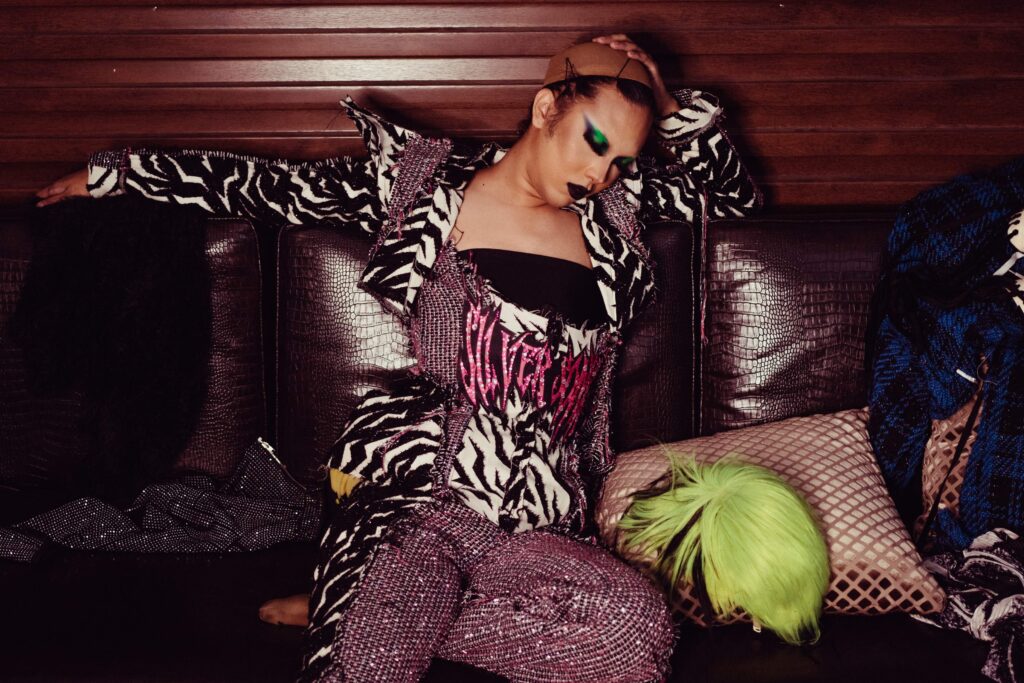
Although queens make the gender-bending art of drag look like a piece of cake, just finding the fitting garments requires thorough research on its own. Most queens prefer designing or altering clothes to match their personal style by making outfits more revealing, glittery, extravagant and fun. Finding places to buy drag outfits is only where you start. You then work your own magic on the clothes themselves. Buying at drag artist-owned businesses is ideal for finding the perfect performance looks and a brilliant way to support the community affordably and effectively.
The seven following “drag” stores are an optimal starting point for building up your closet and supporting drag artists with your purchase. It’s a win-win for all!
and Gloria Groove by Rodolfo Magalhães @rodolfomagalhaes
From marginalised groups to national and international stars, Brazilian drag singers are opening doors within the music industry, breaking barriers, and conquering spaces unlike anywhere else in the world.
It’s difficult to start any conversation about Brazil’s drag queens without mentioning the one and only, Pabllo Vittar. She is far from being the first drag queen in Brazil but surely is the first to reach such great heights in her career, initiated with her 2015 single, ‘Open Bar’; a Brazilian version of Major Lazor’s song, ‘Lean On’. Pabllo’s hit has over 70 million views on YouTube and at the time, was even shared by Diplo, the original producer of ‘Lean On’.
In addition to winning the nation’s heart, Pabllo has started to gain international recognition in the past four years. She’s performed in Coachella and Europe Music Awards and participated in significant collaborations with artists such as Major Lazer alongside the queen of Brazilian Pop, Anitta, in the 2017 hit, ‘Sua Cara’. Recently, she even became the world’s most-followed drag queen on every social media channel, with a total of 22 million followers combined.
Pabllo Vittar, has paved the way for many other queens within the music industry; with Aretuza Lovi, Gloria Groove, Kaya Conky, Lia Clark and many others following right behind her. In 2020, Gloria won hit of the year for her single ‘Deve ser Horrível Dormir Sem Mim’ for Prêmio Portal Music BR awards and Lia Clark’s latest single, ‘Eu Viciei’, increased her number of unique listeners by 530% with over two million views on YouTube. These queens are revolutionising the Brazilian music industry, shifting the spotlight and bringing visibility to the LGBTQIA + community in a society still very much defined by machismo: “I will not be hypocritical and say that the prejudice is ending. But it is something we’re fighting against,” says Pabllo.
The Brazilian music scene may bring you a tropical breeze of Bossa Nova or the drums of Carnaval and Samba, but these genres just scratch the surface of what is a thriving and diverse music scene. Music is integral to Brazil’s national identity and society; as different people sought home throughout Brazil, they established different music styles, each accompanied by a unique form of dance. While drag queens are primarily represented in Brazilian Pop, they flaunt their talents within other music styles such as Forró, Funk and Sertanejo, the most listened to genre in the nation.
Now, without further ado, let us meet the phenomena of the Brazilian music industry-ladies and gentlemen, the queens who take composing, singing and performing to a whole new level!
Reddy Allor and Sabrina Angel the Queens of Sertanejo
These incredibly talented queens are best known to fans of Sertanejo, a type of music originating from the countryside of Brazil in the 1920s. Its lyrics spoke of life in the countryside and later developed into Sertanejo Universitário, a sub-genre focusing on young-adult life and care-free relationships. Despite the rise of feminejo, a term used to describe the increase in female singers within the genre, this is a field still very much dominated by men. So, you can only imagine the challenges Reddy and Sabrina have faced and continue to battle when building this path for other upcoming queens.
As Reddy says, “For existing as LGBTQ+, we already suffer prejudice with stares, jokes and worse, so, it is inevitable that being a drag queen in Sertanejo has made me go through several difficult situations.”
Reddy, who recently released her newest album, ‘ASCENSAO’, started her career at a young age. As early as 12 years old, she began singing professionally in a duo with her brother. She later developed her dragnejo (a term combining drag and Sertanejo) career around 2018 with her single ‘Tira o Olho’ and was the only drag queen in the Sertanejo market at that time. “What inspired me was the desire to feel included, because I always loved Sertanejo but I never felt represented,” she says.
Reddy often sings of self-identity and self-reflection such as in her song ‘Deixa Ela Voar’ which speaks of a broken relationship and of letting her go and liberating her smile. “What I feel and how I feel it, I have always expressed myself through music,” she says. For her, the art of drag challenges gender stereotypes, and when combined with music, “allows for the message to arrive faster and in a way that moves people to a point where we start questioning our own lives.”
When asked to describe the movement with one word, Reddy chooses ‘resistance’. “This evolution is certainly happening and will not pass as a moment. We are here to show our existence and above all, resistance, as people and artists who deserve their space in the industry just like any other.”
For Sabrina who recently released ‘Video Chamada’, their roles go beyond entertainment. “We are here to deconstruct and contribute to society,” she says. “Having names that represent the LGBTQIA + community present on TV programs and on the charts has a significant objective. It shows a large portion of the population what happens in a sector that until recently, was very segmented and viewed with disdain by society. After all, what we all want is respect, equal rights and representation. We want to feel included, and end prejudice once and for all.”
She reveals that producers and studios refused to record her songs and music clips. “When I would contact them introducing myself as a drag queen, they would increase the prices or say they had no available time slots. However, when I’d introduce myself without mentioning drag or anything related to the LGBTQIA+ community, I would find out that the price was four times lower and that they were available on the same day.”
For Sabrina, music allows her to learn and teach that drag queens, too, have their place and value in society as they do in the music industry. Her main goal with her art is to be happy. Secondly, she also wishes to touch people in some way. “When I realised that I could carry a message and be heard by uniting the two things I love, that is music with drag art, I had the certainty that this was my main way of contributing to our LGBTQIA+ community.”
A word that exemplifies the movement for Sabrina is ‘love’. “It is the love for our art, for our community and mainly for the desire and responsibility to make a difference in this society where the majority are sexist, transphobic, homophobic, and oppressive that we are increasingly producing music and clips, making our voices heard.”
Yara Aquino the Forró Diva
This Northeastern queen has recently entered the world of Forró, a popular type of music in the north of Brazil which originated in the end of the 19th century. The style is marked by the sound of the zabumba, a type of bass drum, and a combination of the triangle and accordion. It is represented by a dance between couples, who with bodies almost glued together, drag their feet on the floor.
Yara began her career only one year ago, mainly drawing inspiration from Pabllo Vittar, Gloria Groove and Lia Clark. Since, she has already released her first single, ‘YARA’, which tells a love story between her male alter ego and her drag persona being betrayed and manipulated by him; to later realising this and her journey overcoming it. Having grown up with the genre, Yara thanks it for moulding her into the person she has become; with every special moment in her life having a Forró soundtrack behind it. Even her name has references to Forró singers, Yara Tchê and Silvana Aquino.
For the future songs that Yara states are already written and ready to be released towards the end of this year, she hopes to convey the north-eastern culture in rhythm, aesthetics, and stories. “I have no interest in singing other genres, I want to bring and represent the northeast through Forró like the women I watched when I was a child, wanting to be them, to be on stage. And I hope I can make this dream come true.”
For this diva, the drag queens have arrived to completely change the Brazilian music industry. One word to describe this revolution is ‘innovation’. “I think that the drag singers are the future of music. They’re already shaping music both in its style and aesthetics, so for the future, drags in charge, always. I mean, they already are, but I would like to see more drags bringing new music and rhythms.”
Larissa Santel and Sarah Mitch Take Over Brazilian Pop
These drop-dead-gorgeous queens don’t go unnoticed when it comes to Brazilian Pop, a modern genre and important aspect of the Brazilian culture, popularising sounds and voices which were previously hidden in small niches.
For Larissa, who is soon to release her single at the end of May, Pop was where she found herself. Her eyes would shimmer while watching international Pop singers, hoping to one day, obtain the same success in Brazil. “I chose to work with Pop as it involves not only music but also dance, fashion and culture. It’s a genre that takes many musical styles from different regions to the public in a much more commercial way.”
She also says how the divas of Pop have always embraced the LGBTQIA+ community with Lady Gaga and ‘Born This Way’, a hymn for the drag community. Like many queens, she also praises Pabllo Vittar, Gloria Groove and Lia Clark for bringing visibility by making songs that extended beyond the community. “Drag art in Brazil is splendid, we have artists who overcome incredible barriers and I can’t wait for all of them to show their art to the world. And in the music industry, we already have incredible singers who unfortunately still do not have the space they deserve but are battling to achieve their place here in Brazil and in the world”. Larissa is doing just that, fighting for her art to be recognised, “We’re strong and we have to take every bump in the road with a smile and platform-15 high heels,” she says.
When it comes to Sarah, she knows the Pop industry from inside and out, having even been featured in legendary programs such as ‘Amor e Sexo’ from Rede Globo, a talk show with weekly guests who discuss topics and taboos related to love and sex. For her, the movement is surreal. “I come from a time when there wasn’t a place for drag and music. People thought I was crazy, wanting to sing live in the clubs 20 years ago! Then I saw Pabllo, and her success made me complete. Having this representation with such success, paved the way for a very relevant discussion in broad media channels. It’s surreal! It doesn’t matter the genre or theme of the songs, what matters is who is there appearing and singing them! This is very important for the LGBTQIA+ community. This is what really matters, besides putting everyone on the dance floor!”
Sarah always tries to convey a message in her music, be it profound or not. Her latest single, for example, ‘Janela’, talks about a personal loss. She also addresses those who simply seek “to dance”, for instance, with her 2013 song, ‘Bad Girl’.
Both queens, coincidently, chose the word ‘warriors’ to describe the drag singers changing the industry. “In addition to the successful drags, there are hundreds of invisible artists who fight for space every day, just like me!” says Sarah. Similarly, Larissa focuses on the strength and determination needed to enter an industry that remains very closed to anything other than the norm, one which heavily excludes the drag community.
Lilo, Feminism and Funk
Similar to Lia Clark, Aretuza Lovi and Kaya Conky, Lilo is making history when it comes to Brazilian Funk. With its roots in the peripheries of the south zone of Rio de Janeiro, Funk began in the 1950s inspired by USA’s Rhythm and Blues and Gospel. The genre is characterised by its unique beats and has been a medium for many marginalised voices to represent themselves, especially their lives in the favelas. Funk has long been stigmatised due to its controversial lyrics which tend to normalise sexism, ostentation culture, crime and even rape culture. However, the rise in drag queens within the industry is a clear sign of its evolvement.
Lilo started her singing career about five years ago with her first Pop/House single, ‘I Want You’ in 2018. She recently got into Funk with her latest song, ‘Coitado’, which brings together a new sub-genre of Funk called Brega Funk and Funk Pop. Similar to MC Pocah’s, ‘Não Sou Obrigada’, her new single, which translates to “poor you,” talks about unfaithfulness, moving on quick and realising ones’ value, showing in the end, that it was his loss. The theme of women empowerment and revenge is extremely prevalent within the feminist movement in Funk, changing traditional roles present in Funk and society of women as submissive, also representing an unruliness and transgression from normative discourses on gender and sex.
For Lilo, it’s more than just the culture these queens bring, noting that if Funk is already marginalised in every aspect, imagine drag within Funk. “We break gender and sexuality paradigms and stereotypes with our art, showing different ways of doing gender. Little by little, we are conquering spaces and a deserved recognition. We already have big names, artists that certainly opened doors for new ones and so on.”
Finally, when asked to describe these queens in one word, she chooses ‘unique’. “The future is already here! We’re already living it, and the industry needs to adjust to it; be more representative, more inclusive. I have a lot of faith that this will become real, drags in mainstream music, on the radio, on open TV, series, films, everywhere.”
Pad Like A Pro

That perfect-persona body can often use a little help, and that’s where proportionising comes in. The subtle … or not so subtle art of padding is usually made from foam, latex, and everything but the kitchen sink. When funds are low and the body needs to be snatched, anything will do.
The choices for todays’ drag community are finally stepping into the 21st century and getting better by the stiletto. At RuPauls’ 2019 Drag Con, the A.V. club talked to some of the industry’s leading padding companies about the importance of achieving the illusion of a perfect body with various female and male body enhancements.
For both a drag king and queen, padding is part of a long line of crucial necessities when constructing the fantasy and delivering a good performance. So how would you use padding? And where is it best to place them?
Relationship(s) with a queen
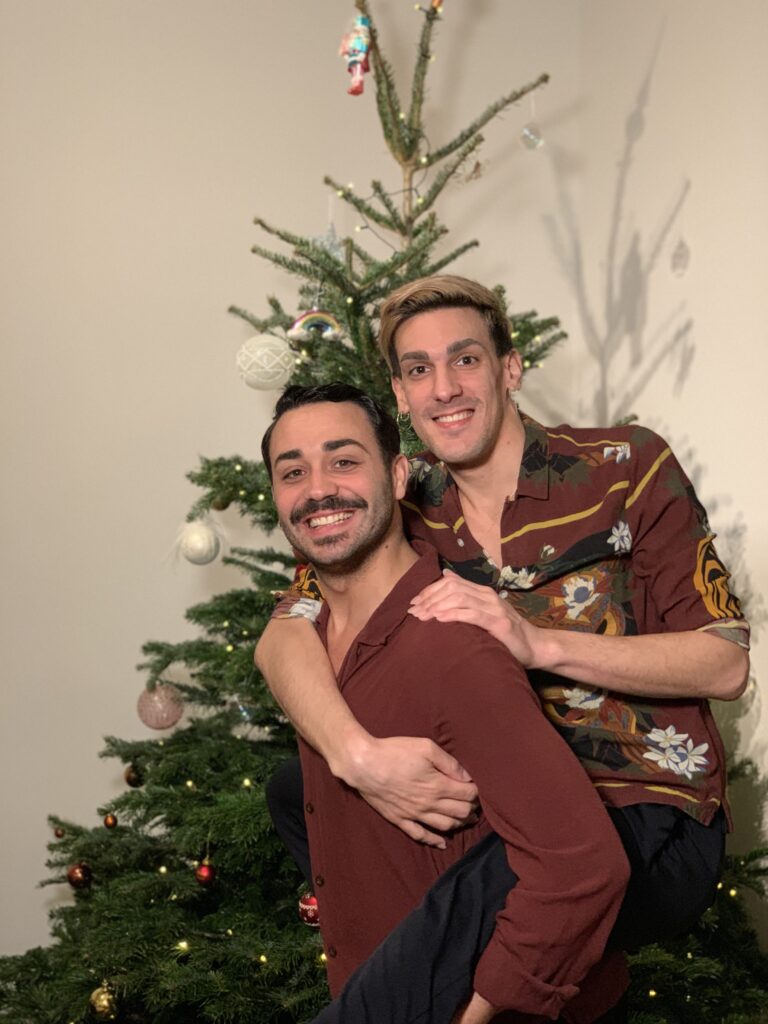
“My favourite part of Jan doing drag is seeing how happy it makes him. And the least, well, cleaning the house after he’s finished.”
Dating a queen can mean and involve many things. For one, you’re investing yourself into someone extremely charismatic and different to what you may be used to from your past relationships. And especially, you are dealing with two characters – if it wasn’t hard getting to know someone before, try two at once! But imagine having two versions of someone you sincerely appreciate, and wholly distinct ones at that! Wouldn’t it be interesting to know what it’s like? What does a relationship with a queen, let alone living with one, look like?
Is it the sassy, flamboyant and unpredictable queen you are with, or is it the handsome heartfelt man you fell for at the dinner table on that lovely date? Or is it, perhaps, both?
“The main difference between living and being with someone who does drag is that the one who does is much more interesting,” says Antonio Grasso (28), from Italy. Antonio has been with Jan Sabater (27) from Spain for two and a half years, of which the past one and a half were spent living together in Munich, Germany. “Janisha Jones, Jan’s drag alter ego, also lives with us, of course,” Antonio chuckles. While Antonio works at Emporio Armani, Jan is a drag queen and a part-time waiter. However, since the pandemic, his waiting job has shifted to shifts at a Covid-19 testing laboratory instead.
Finding out someone is involved in drag can be confusing and uncomfortable, just as it can be fun and refreshing. It really depends on the person you’re dealing with. “For me, it was absolutely okay; I loved drag from the first moment,” Antonio says.
It is also quite ambitious to be the one to break the news in fear of unacceptance and judgement. “I’ve dated other guys before and gotten a rejection when the news was out in the open,” Jan says.
Antonio and Jan’s very first encounter almost gave it away. “I was working at Tezenis, a lingerie store, and Jan came in with his mother to buy some tights for Janisha. I remember, he was so ashamed, he didn’t even look into my eyes. Then, two-three months later, we wound up in the same club and ended up dancing all night,” Antonio says. “I had no idea he was a drag queen until our first date when he told me about Janisha and explained who she was. I then put the pieces together with the tights incident.”
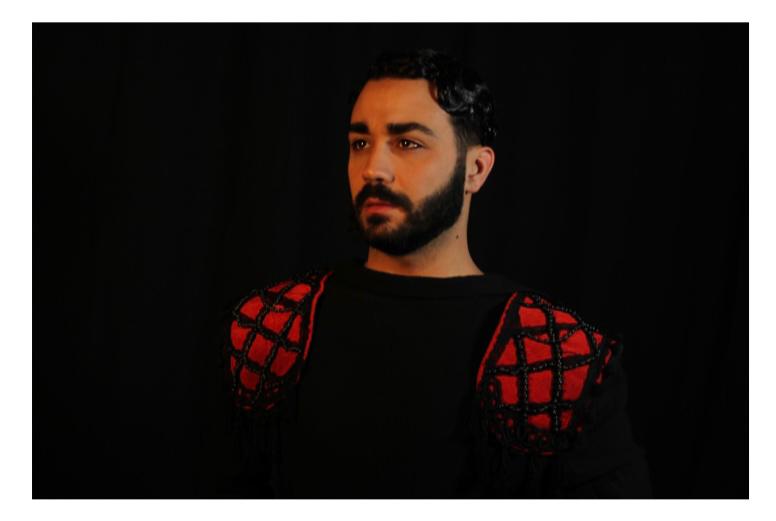
The reaction and opinion are essential if one decides to go down a serious road with someone. You need to accept the person and love them for all they are. “As I said, people did reject me when they found out I did drag, Jan says, but through these experiences, I stopped being nervous and learned that if the guy in question isn’t accepting, then he isn’t worth it. He’s just not the one.” And luckily enough for Jan, Antonio was more than okay with it.
One’s family and friends’ reaction is also important when breaking the news as you want them to accept and love your partner the way you do. “My parents don’t have all that much to say about it, but they’re okay with it, Antonio says. Since they live in Italy, they haven’t had the opportunity to see Janisha perform yet. Still, I know that when they come to Germany, they’d love a performance.” However, with different generations, values and cultures, not everyone is so lucky and receives support.
“Drag isn’t my passion, but I love it nonetheless. It’s so much fun to attend drag shows, and I love watching Jan perform because it’s fun. And above all, he’s happy,” Antonio says. Antonio and Jan even seem to have great teamwork going on, which numerous other relationships lack. “I am actually quite involved in drag life,” Antonio says, I love to help Janisha with the dresses and do consider myself as somewhat her stylist! I always attend her shows, and I love Janisha’s friends Pasta Parisa and Dean Deville.”
Antonio even went a step further and tried going up in drag, “but only because it was lockdown and Jan was bored,” he says, “he wanted to put some makeup on me, and it was exhausting. Lashes are annoying! But it was fun, so I’d consider doing it again.”
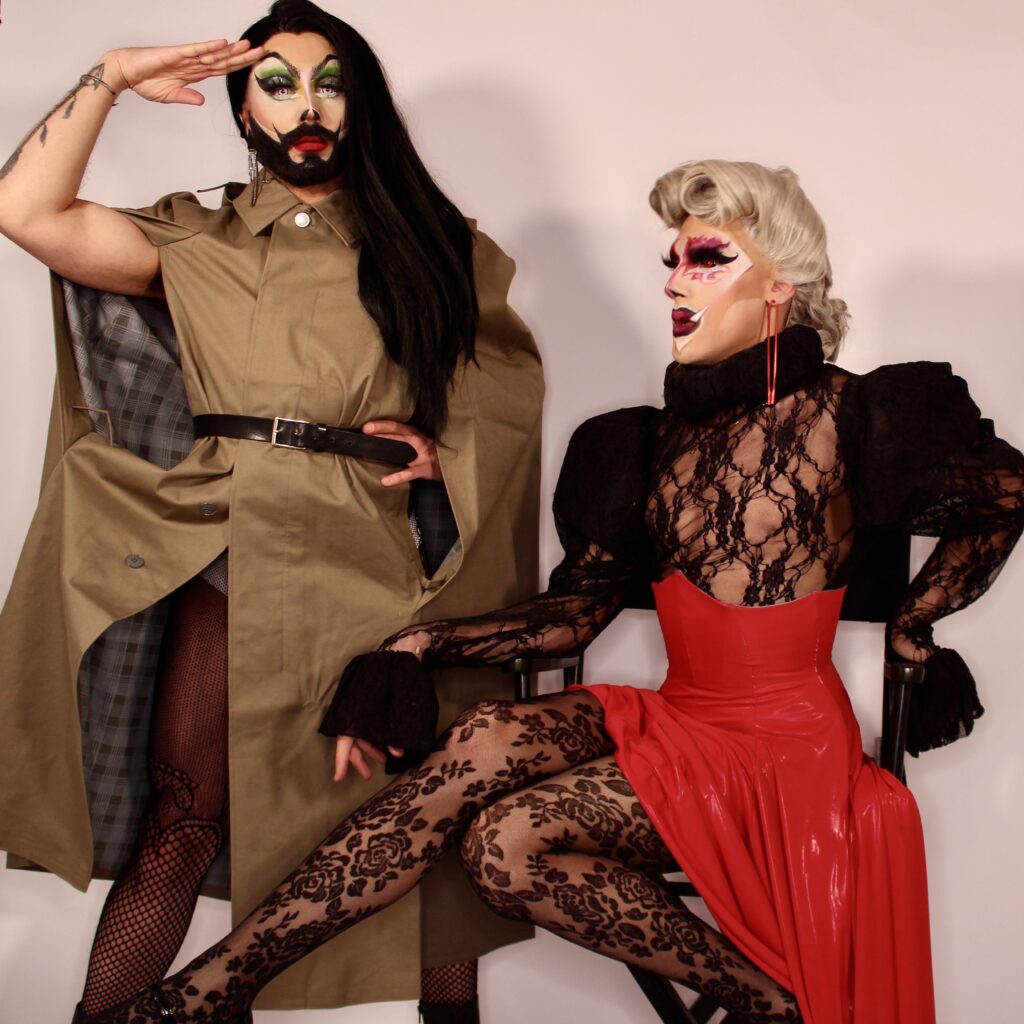
Of course, differences in hobbies and interests can also call for trouble, especially with a practice as explicit such as drag. “Sometimes we fight because of Janisha, Antonio says, especially if there’s a mess in the apartment with piles of clothes and makeup all over the floor growing like stalagmites. Sometimes if he has a lot of work, he’s always tired, and that makes me a bit sad because we don’t spend a lot of time together.”
At the beginning of their relationship, Antonio says there was a lot of jealousy, “he was always flirting with other guys as Janisha. But also, as Jan. He works in a Gay bar and to get more tips, he flirts with guys. It cost me quite some time to accept and finally understand it.” While these issues can seem exclusive to drag at first, they really do manifest in all relationships. But again, a difference in hobbies or interests aren’t always so bad. “Antonio was actually a ballet dancer once, so I’ve learned a lot from him,” Jan says. “He always comes to my shows, analyses them from head to toe and tells me what I can improve and do differently.” Support and encouragement are indispensable in partnership, whether it be the smaller things or just generally. “I feel very supported by Antonio, Jan says, yes, I’ve been in longer relationships than with him, but none of them were even half as good as this one. He’s like my coach, and we learn so much from each other.”
An interesting aspect in regards to dating a king or queen is that one of treatment. There’s a widespread assumption that dating queens may be strenuous at times and that when up in drag, a whole other personality manifests itself, therefore changing the dynamic of the relationship entirely. Is that really the case? Well, Jan describes his relationship with Antonio as harmonious, “if I cook, he’ll clean the kitchen,” Jan says. “We aren’t all about romance, nor do we roast each other excessively. We take care of each other. However, when Janisha comes into being, well, a lot of roasting goes on. Janisha is a bitch.”
It must be interesting to get to know two versions of your partner; you may even have a different relationship with each.
“Janisha is arrogant and bossy while Jan is quieter and chiller,” Antonio says. “I get along with Janisha, respectively, if she’s not under stress. Nobody wants to see Janisha under stress. She can be aggressive and very sassy, and sometimes we also get into arguments because of it.” On the other side, Jan perceives Janisha’s change of attitude towards Antonio not to be too drastic but does admit that it happens occasionally. “Janisha can be a big diva at times, and I might end up treating Antonio differently, but I try not to do it,” he says.
Another concern may be the aspect of appearance change and attraction towards one’s partner. You may hear Drag Race’s Season five winner Jinkx Monsoon’s words echoing voice now, saying, “I didn’t come out of the closet to date a boy who dresses like a girl.” However, as a gay man, Antonio doesn’t find it bothersome. “I actually find Janisha quite attractive, he says, but I think it must come from the fact that I know that Jan is hiding underneath all of those makeup layers.”
Being in a relationship with a queen is one thing, living with one, a whole other. Antonio and Jan moved into a new 100-square meter flat in February this year.
They share a bedroom, a big living room and an attic with a workroom. As we know, girls mostly have a lot of clothes and cosmetics. And when in a getting-ready crisis, these may end up everywhere. A drag queen, too, has an abundance of items; no need for a reminder.
So, what does the dynamic living with one look like?
“Since Antonio and I have the same size, we share our clothes. That’s why we have one closet together, and Janisha her own,” Jan says. However, it wasn’t always like this. Back when they lived in their old flat, Jan explains that Janisha also had to share a closet with them and that that was a little bit annoying and, at times, a catastrophic mess. “We are fortunate we found this fabulous new flat, Jan says, now everyone has their space.”
But with queens being as extravagant and expressive as they are, it can’t be too easy to keep everything in order, no? “Everything that has to do with Janisha stays in her own space,” Antonio says. “Yes, the bathroom is something else; all of the makeup is in there, and trust me, there’s a lot of it. Sometimes it looks like a tornado has passed through the whole flat. And that especially if Janisha’s been drinking before,” Antonio says.
So, as we can see, a relationship really doesn’t seem to be all that more complicated with a queen than with someone else, or at least not in the way one may assume. “We understand each other,” they express. “Antonio understands what Janisha means to me and also understands the art of Drag,” Jan adds. From this view, it seems to be a very supportive, fruitful, intense and exciting dynamic with lots of adventure. “I’ve learned many things by being with Jan, but also especially from Janisha,” says Antonio. “I don’t have to care so much about what people have to say or think. I’ve learned to care more about myself, to have fun and do the things I love.” In any case, life lessons are taken from all experiences. “I’ve also learned that defending your partner in this new way is equally important. I almost got into a fight with a guy once who was not nice to Janisha and talked bullshit about her,” Antonio says.
So really, is a relationship with a queen as different as one imagines it to be? “Our relationship is fun, crazy, strong and intense,” Antonio says. “Yes, it’s exhausting, but it never gets boring. I have Jan and Janisha, and I know I’m going to stay here for a long time.”

The story of a bio-queen who reveals the influence that both drag and her persona Ivy Lickens have had on her life and development. Who knew embracing your femininity could be so empowering? Meet law student Scarlett Blue (21), from Serbia.
“All my life, I was a very insecure kid. Growing up, I felt uncomfortable about my male-like behaviour and wondered if I was just an odd kinda girl. I did have that emo-alternative style, but all the others girls around me wore dresses and braided their hair. I was the weird girl, and it weighed on me. That is, up until I discovered drag in 2016.
By pure accident, actually. I was scrolling on Tumblr and saw a GIF of Khloe Kardashian as a judge on the show RuPauls’ drag race and was really amused. Me being my inquisitive self, of course, needed to see what the show was about. It just seemed so funny. And then I found it, and guess what? No one saw me for days. I inhaled the show like it was air. I became absolutely hooked. “What an amazing world of fantasy, of being yourself, but the fantasy version of yourself!” I kept thinking. At the end of that marathon, I felt renewed and like I had a new outlook on life. And I actually did. From then on, I embraced my individuality more than before and tried to care less about what others thought.
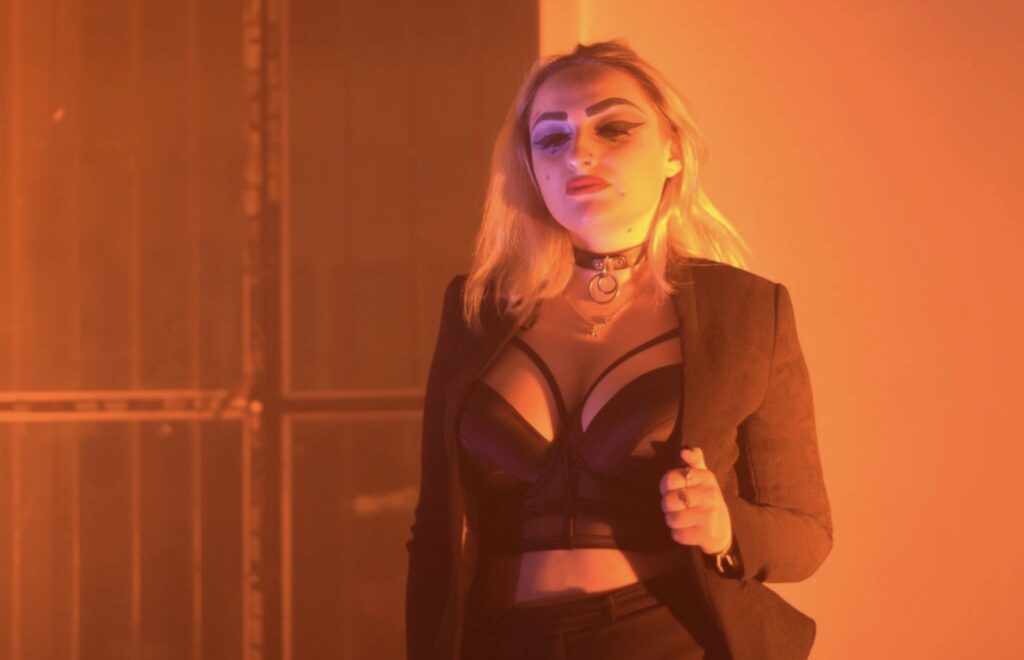
It also pushed me to try new things, such as exploring different sides of myself. I started wearing whatever hairstyle I wanted, colouring my hair in electric blue, going crazy with makeup, meeting new people and exploring new horizons. Each and every one of these things brought me something. And even if it did take a second, it also did my dear drag alter ego, Ivy Lickens. Ivy is a woman in an identity crisis. She is strong, but she is weak; she is a badass and a softie, a lustful succubus and a hopeless romantic. She is everything a woman is and everything a woman is not. She’s an uncensored print of who I am, what I’m feeling and what I want to express. Her entire appearance reflects those things each time I perform, and I love that. I’m free to experiment with different looks every time.
My first appearance as Ivy Lickens was probably in 2018 in Serbia. My fabulous drag mother, the illustrious Dajana Ho, asked me if I wanted to participate in a show about baby drag queens. Dajana Ho is one of the first queens I ever saw perform and the man behind the character Drazen, who grew to be a close friend of mine. Through our conversations about social issues, he decided women should also have a platform to perform drag. This is what gave me the courage to jumpstart Ivy Lickens. Dajana is a complicated woman, full of demons and theatricality showcased by her many talents on and off stage. A true voice of the people and an artist to the fullest extent.
The main difference between a drag queen and a bio queen is gender. If we just go with the flow, let’s say that drag queens are males, men dressed up in drag, and bio queens, are biological women who take on a persona of drag. Ultimately, they are the same: you have exaggerated makeup and have the performance aspect. As a lover of makeup and drag aside, I jumped at the opportunity to participate because I actually find it crucial to hear female voices in a world where you’re impersonating them. For some people, that’s a subject that’s highly up for debate. Still, I think everybody should be allowed to do drag, that is especially trans people. They have been very discriminated in that world.
I have also encountered some resistance as a bio-queen. People tell me that I’m not a real queen and should leave performances to gay men expressing themselves. I found this ironic since, in their view, it’s an art form impersonating women that should exclude a bisexual woman expressing her view of femininity in a world where that question is contested daily. Yet, this didn’t stop me from performing, and I luckily had a fantastic drag family that never excluded me. I, too, think of it as an art form: it’s not who you are; it’s what you do. And therefore, nobody should be discriminated against in the world of drag.
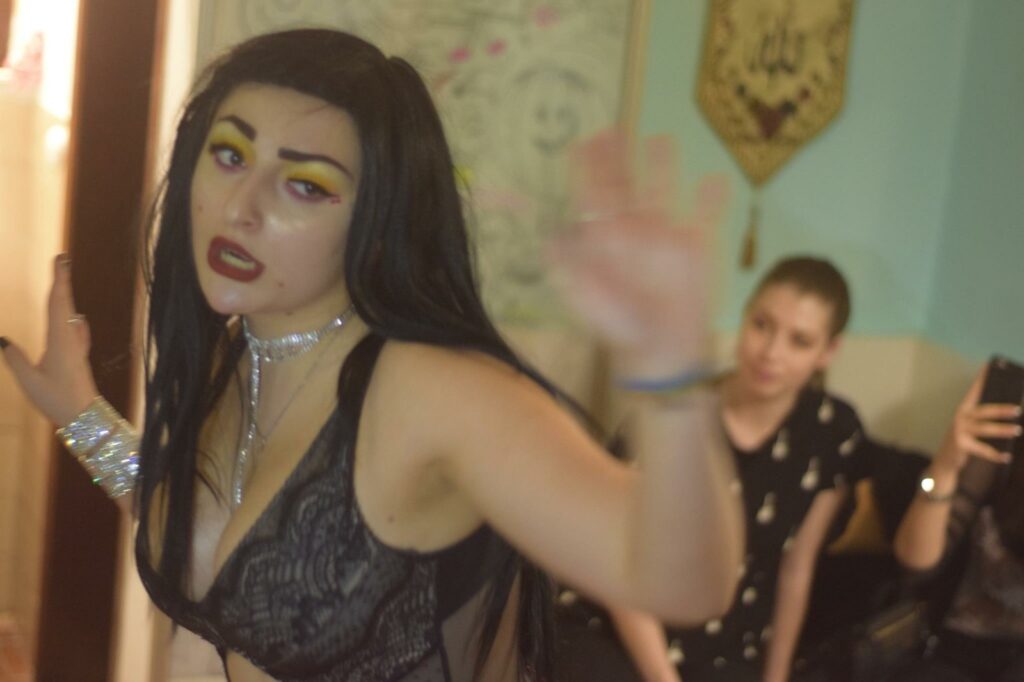
But anyways, Ivy Lickens, whose name actually came from a complete joke. As a kid, I always wanted to have the nickname Ivy because of the plant poison ivy. Of course, it never stuck as everyone refused to call me that. I was also inspired by Ivy Winters, a queen on RuPauls’ show whose character and entire aesthetic I was very fond of. She’s really more of an honest and developed version of me. Well, an exaggerated one, which I achieve aesthetically by taking the makeup I do daily and pushing it to the extreme with more prominent brows, lips, eyeliner, and eyeshadow. Ivys’ style is not set in stone, and that’s what I love about her. She’s unpredictable and incessantly fabulous. I also wanted to play on Winters and lickens, because lesbians lick.
What I like to do with my drag, which I regrettably don’t do as often anymore due to time constraints with law school, and the elephant in the room of a global pandemic, is I embody different characters. I like to play with the different facets of femininity. For example, my first track performance focused on that boss bitch vibe. I had just gotten broken up with, so, coming out of a four year-long relationship, I was determined to make myself feel like I was on top of my game. I lip-synched to a variety of artists in that performance. I incorporated the theme song of the show Lucifer as an introduction, included Fergalicious by Fergie because, of course, I had to, and ended with reference to the elimination of BenDeLaCreme, which was a self-elimination. Instead of eliminating a bottom queen as the winner, BenDeLa used white-out to eliminate herself, as she could no longer take the pressure of the competition and eliminating her fellow friends. Following that, I thought it would be a fun way to finish my almost 10-minute-long set instead of just walking off at the end of the song.
I remember feeling invigorated after my premiere as if I’d been reborn. There was a new part of me that I had to explore. So, it only made sense that I chose these breakup-revenge songs where the woman was stronger coming out of the relationship. The more I got into the drag performance scene, the more I delved into my creative side. There was a phase during which I was keen on taking after Disney characters. I remember doing a nostalgia show where I brought back the Suite Life of Zack and Cody, Hannah Montana, and That’s So Raven. I also did one where I took the Divas of the 80s, the powerful women with a hint of masculinity in them with their leather jackets. One of my favourite performances was when I integrated female vulnerability. I progressively took my makeup and lashes off throughout the show. I wanted to offer insight into what’s underneath and how a woman can be broken down. I remember that silence, and those eyes, while I wiped myself of all the makeup. And the cheers when I collapsed and the song finished. Although I got an extensive amount of compliments afterwards, I think only a few people understood that the performance was meant to show vulnerability and the relationship mask falling off. I believe many mistook it instead as sheer insanity linked to heartbreak.
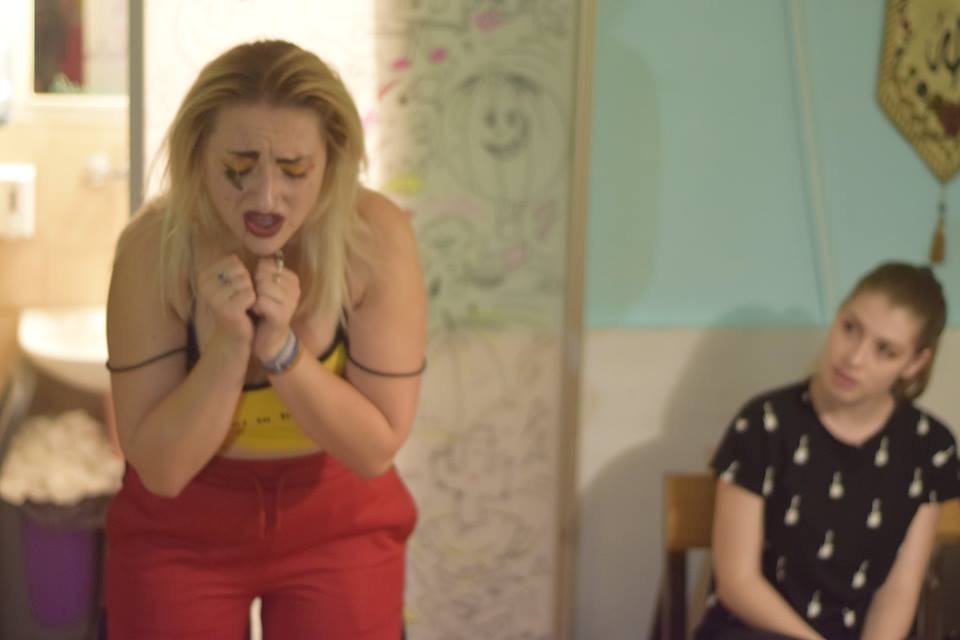
I really do try to embody different aspects of females and femininity in every single one of my performances. That is because in real life, even though I have a lot of makeup on, or “my mug is beat”, as we like to say in the community, I am a very male energy-oriented person. I do behave myself in a stereotypically male way. So, I enjoy embracing that little femininity that I don’t get to otherwise. Hindsight, drag has taught me that every single morning, whether you’re an actual drag queen or not, you are putting on a drag persona. Not everyone in your life gets to see how you are at home. Take makeup, for example. I began to see makeup as a means of creative expression, where through the colours or style I choose, I’d communicate how and what I’m feeling that day. When I got comfortable doing that and people around me grew accustomed to the striking, colourful makeup, that’s when I really started seeing how I asserted myself. I grew into a version of myself that didn’t fear the repercussions of what people said about me because I realised it just didn’t matter at the end of the day. I even have a tattoo on my thigh that says, “We’re all born naked and the rest is drag,” a quote from RuPaul which I love to look at because it reminds me that it’s not only on stage that we play a character and a persona. We all do it subconsciously daily. I think that if we all just dropped the mask and were to be whoever we are, even under the guise of three tons of makeup, chains or heels, we still are an aspect of ourselves. One that we are maybe too scared to show off because we fear judgement.
RuPauls’ Season Six winner Bianca Del Rio always says, “Not today Satan.” Every time I encounter a difficult situation, I say it aloud. With the exception, of course, when I’m in class. Imagine screaming that out while talking about criminal law surrounded by other law students. Anywhere outside of that scenario, you’ll find me chanting that tagline which comes from the feeling of “this person is testing me, this person wants to see me in a mug shot; this is not going to happen, you’re not going to influence my vibe. Not today, Satan, be gone.” It does sound really dumb when you’re having a casual conversation with somebody, and then out of nowhere, you look at them and say something like “I’m a fucking Libra, Hiii”, BUT it does make people laugh. I enjoy making people smile or happier, even if it is out of sheer confusion.
Regardless of whether you are part of the community itself, just a spectator, or simply find it interesting or fascinating, there’s one message that every human can take from this. And that is, as RuPaul said, “If you can’t love yourself, how in the hell are you gonna love somebody else?” And I’ve got all of the Kings and Queens to thank for that.”
“Drag Uncovered” with Violetta J’adore
In this video, the face of our #beautyforme campaign, Violetta J’adore, does her make-up, while sharing how drag has impacted her life. A fan tries to recreate her look thinking it’s easy but it doesn’t go as planned!
Video by: Joana Ndoka, Gemma Romain, and Chantelle Lewis.
From Athens and Mykonos’ cabarets, the Greek drag scene’s diva shares her story, from serving the navy to producing and presenting the very first Drag Beauty Pageant in Greece. Meet Doukissa, the 30-year-old duchess of drag from Crete.
“When I was a kid, I used to dress up as a woman for the Greek Carnival. My sister would do my make-up, and my mother would lend me her most extravagant dresses from the 80s. When I was 18, I moved from Chania, Crete to Athens to study Public Administration at Panteion University. From a young age, I was a huge fan of Takis Zacharatos, a Greek entertainer who impersonates different public personas. Once I moved to Athens, I went to see one of his shows. With every other drag show that I would attend, the more I fell in love with drag.
Becoming a queen myself was a decision I made when I finished my military service at 25. During my time as a soldier, I was oppressed, and when I left the navy, I told myself that I wouldn’t ever engage in anything that represses me again. I decided to study interior design and created my very own drag queen persona. In 2015, a friend who used to organise events came up to me one day and asked me to perform a drag show for one of her events at a gay club in Athens. A year later, in March 2016, I chose to pursue drag professionally as Doukissa. Five years have gone by, and I haven’t looked back once!
I adopted the name Doukissa due to its double functionality; it’s both a name and a title. In Greek, it means duchess. Doukissa is a comedy and pageant drag queen who loves to interact with the audience. I love performing Christina Aguilera and Greek songs, and pop-folk songs of Angela Dimitriou, known as the Lady of Greek folk music, a diva indeed. From make-up styling to the concepts and choreographies, it’s all part of my vision. Some of my drag clothes are actually made by tailors who draw inspiration from my sketches. I also have store-bought dresses, which I personalise to fit Doukissa’s style. For the most part, my drag persona is the same person as me, George. George is social and flirty, Doukissa is super social and extra flirty. Whatever I am, Doukissa is too. But to a superlative degree.
When I told my loved ones that I wanted to become a drag queen, they were surprised at first due to my stereotypical “straight” look. While they’d never expected me to want to do something this feminine, they are very supportive. My parents’ only concern was whether drag has a stable income and how long it can last. Other than that, they were excited about my drag journey. They came and watched one of my shows in Chania, Crete and my mother gave me all her fancy dresses that I used to wear as a kid. In my personal life, the reactions have varied. I’ve met people who have felt bothered that I’m a drag queen, and I’ve met people who were excited to find out what I do and asked insightful questions. I have a pretty big fan club, which encourages me to keep being the diva duchess I am. I’ve made sure that the people around me aren’t toxic, so I’ve never had anyone question or made me question my decisions.
Ever since we’ve been in lockdown, I’ve been practising drag on social media. I collaborate with other queens and interact virtually with my fans as much as possible. I’ve also been organising the very first beauty pageant for drag queens in Greece. “Miss Hellas Drag Pageant” will take place on the 11th of June 2021 and I will be the event’s host. One of the judges will be Lenn Ryberg, one of the first to bring the drag scene to Greece, doing shows in Mykonos back in 1982. I’m very excited and proud of this project. I am trying to promote drag as much as possible in my home country, one of my goals being to make the drag pageant an annual institution in Greece.
Drag is literally everything to me. It’s magic, it’s art, and it’s expression. I’m one of those people who live for drag. Although it takes me an hour to do my make-up, it really feels like five minutes. I enjoy it so much, and I honestly get lost in the process. I get nervous when waiting to perform because I only serve the best even though I’ve been doing this for years. But once I hear my song start, it all goes away, and there I am doing my thing! My favourite performance was probably during Thessaloniki Pride in 2019. I got on stage, and ten thousand people were singing along with me – the feeling I had is unforgettable.
One of the difficulties of this job is the lack of dressing rooms for drag queens at clubs. I’ve often had to get dressed at my house and ride my motorbike dressed up to get to the venue. Having my personal space is definitely a challenge for me. Some clubs don’t even have a stage, and you have no other choice than having to perform in between people or in a small area which limits you, especially in long-ass heels. But at most of the venues I’ve performed, I communicated with the owner and found solutions.
Like in many other jobs, when you first start, you are poorly paid. The money is little, to even non-existent sometimes. It takes time to build your personal brand and raise the standards. Having a fair salary is a problem that many artists face, as they are often neglected by the government.
During this pandemic, things have been even harder financially for creatives. Being an artist who cannot work because of Covid, I received a sum of money from the Greek government. But this rule only applies to those who have a contract, and freelancers, unfortunately, are on their own. Even though it’s going to be hard when things go back to normal, it’s crucial for all drag queens to keep the same fee and not lower it; otherwise, we all risk being exploited. The pandemic has already made the prices drop, to the point where they don’t even cover the basic expenses. Hospitality and Entertainment have been damaged the most by this pandemic, and consequently, so have drag queens.
Greece has improved in terms of LGTBQIA+ acceptance, but that doesn’t mean there isn’t room for progress. Thankfully I’ve never experienced any verbal or physical abuse for being a drag queen, and I walk around dressed in drag a lot. I don’t know if that is because I don’t take bullshit from anyone or if I’ve just been lucky. In terms of drag, people seem to enjoy the performances and acknowledge it for what it is, a form of art. More and more people have found the courage to pursue drag, and it’s a beautiful thing to see.”
On the verge of almost giving up on drag to overcoming her battles and embracing her scars. Meet the extravagant Morganaclair, a small-town boy from Brazil with dreams larger than life.
“Sometimes I stop to think about how much I have been through for my age and it seems unreal. First and foremost, my name is Sharon. I’m 20 years old. Yes, a baby, right? I’m a typical countryside boy from Espiríto Santo, Brazil, who grew up in a small city called São Roque do Canaã. I went through all the struggles and difficulties that most gay teenagers go through in school and society. I was bullied, beat up by girls and boys, was left out of football classes during PE, and when I did play, the boys would do everything possible to hurt me. I’ve had my head put inside the toilet, clothes ripped; really anything you can imagine has happened to me during school.
I didn’t have a father figure present for a significant time in my life, so I grew up with my mother and stepfather. I didn’t get along with my stepfather, so when my mother left for London, I went my own way too. I moved in with my friend Alexandre, who was the fuse to the start of my drag queen journey. The small town we lived in was extremely conservative; everyone was very narrow and closed-minded. We were the only openly gay boys in the city, and I think that Moraganaclair came to me as a refuge. For me to find myself as a person. As gay Sharon, people thought I’d have that gay boy attitude. The one where I’d repress myself and when you put yourself in a place that others put you in, you give them the power to do whatever they’d like. Whereas when I came out as a drag queen, it was written all over my face: “yes I am gay and I’m not ashamed of it,” then the oppressor feels repressed to do anything to you. When I started with Morganaclair, I thought, “Wow, this takes me out of that dark place that I feel people put me in and brings me back to who I am.”
It all started when I was 14 years old and Alexandre introduced me to RuPaul’s Drag Race, it was all new to me; I had never heard of drag, nor ever seen a king or queen. As we started watching the show together, something new awoke inside me. I’ve always loved makeup. I must’ve come out of the crib with a makeup brush and when I started watching RuPaul, I thought, “I like this, I think this is what I want to do.” So, I borrowed a wig from my grandmother, got some “bathroom makeup” and did a whole makeup look; I looked a mess, but I thought I was fabulous. I took a photo of myself and sent it to my friend saying, “Girl… I look beautiful, perfect, I am drag.”
Then came my drag’s name, and the process was long. Alexandre and I thought of so many names; Paloma, Tiffany, Princess, Patricia… but I was like, sis, these are not it. Then I remembered this cartoon that I used to watch as a kid called Castelo Ra-Tim-Bum, where the witch’s name was Morgana. She was fab. But we still needed more, something that would fit with Morgana. And there we were, one day, two gays walking around the mall looking at store names that would match, and we found Clair. Morganaclair it was. After the name, came the construction of my identity. I always try to portray the woman figure as closely as possible. I try to bring a more feminine and delicate woman and sometimes a mulherão, you know, that Brazilian woman, who’s all empowered.
Once that was all set, I started performing in school when I was 15. This was my time to shine. When the big day arrived, I looked ugly as hell but felt fantastic. It was incredible because I received a very unexpected reaction from people. After all, Sharon as a gay boy, he was rejected in school, no one respected him. Then people saw me in drag… I remember going down the stairs in my school building and when everyone saw me, they were like, “wooowww” and everyone started screaming. I really hadn’t expected this, and it gassed me up so much. I knew I needed to feel that again. I wanted to, and I would. After that, everyone talked about me; I was the centre of attention. That is why I say that Morganaclair brought me comfort; it was through her that people got to know me better.
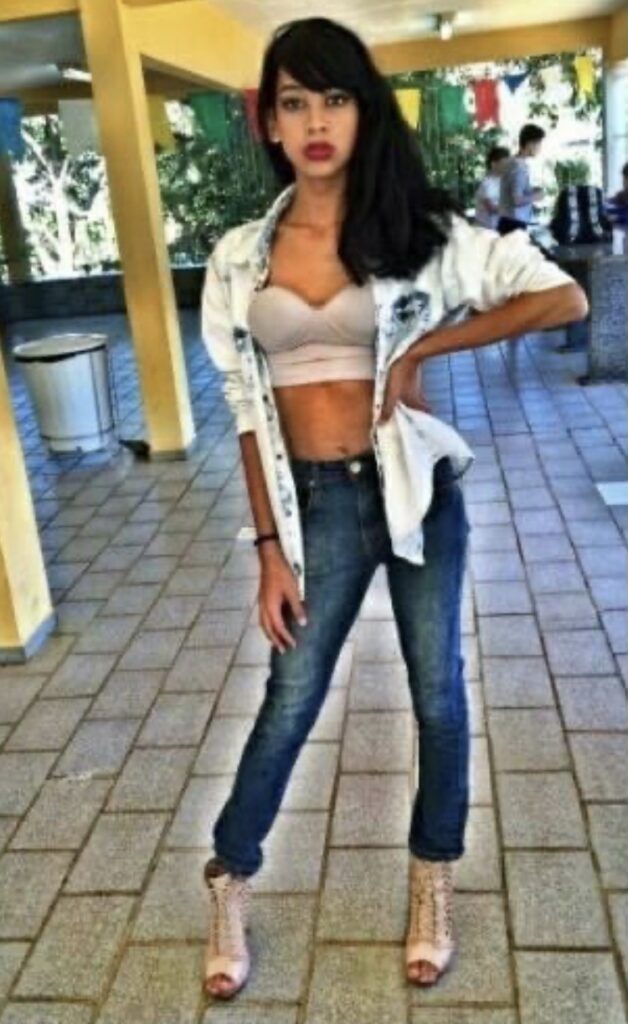
Although drag was a gateway for me, I have also suffered a lot because of it. I’ve been mistaken as a transgender boy; on the streets, people would stop to ask me how much the program cost. I felt this lack of acceptance in relation to everything, employment, social inclusion, even my family wasn’t accepting of me, only my mother because the rest didn’t take me seriously; they thought that being gay was alright but drag was too much. But eventually I said fuck it, they weren’t the ones who raised me anyways.
Despite everything, I didn’t give up. This was primarily because of my mum. She was very supportive, both when I came out as gay and as a drag queen. I’ll never forget the moment when I came out. I was hysterically crying on my bed and my mum looked at me and said, “You will never stop being my son, not because of this or anything else, so don’t worry and go wash the dishes.” It was very gratifying because I wasn’t expecting this from her. I think that my persistence must stem from how tough she is.
Another key person in my journey was Alexandre; my mum was the key, and he was the lock. He was already openly gay when I met him in school, so I had him as a point of reference. We formed a bond, a friendship, we had a romance for some time, broke up, were enemies, lovers again, best friends and now brothers. He has helped me with everything. I used to watch how he’d live his life, how he’d behave, how he’d walk, and I just admired him so much. He was and continues to be a significant person in all aspects of my life. He was the first person I came out to, he was my drag mum, the one who put the wig on my head, gave me my name, his home for me to get ready… I have so much to thank him for.
In these five years, I did take a break from drag when I moved to the land of Pão de Queijo (cheese balls), Minas Gerais. My mental health wasn’t good; I had just gotten out of a relationship and started to get depressed. I even started asking myself whether drag was worth all the worries. It wasn’t until I moved to London two years ago that I got back into doing it. I believe that if I hadn’t moved here, I don’t think I would’ve ever gone back to doing drag. And it’s funny, I didn’t know anything about this place, nor the language or the people. Still, I noticed how differently people are treated here. Regardless of their religion, gender, ethnicity, there’s a lot more acceptance. So, I bought my first wig here, and I knew I had to go back to drag. This is my world, this is what I like to do, this is Sharon.
Now, I’m doing drag more as a hobby really, I don’t have performances as I did in Brazil. When I moved to London, my idea was to show the city my drag but due to the pandemic, I had a change in plans. I plan on doing a degree in design, or artistic makeup, but for now, I’m just a “bathroom drag” with her little stool, mirror and makeup. My main goal with drag though, would be to make a living out of it and become famous and recognised for my work. My ultimate dream is to have my TV show called ‘Good Morning with Morgana’. It can be for five minutes on SBT TV, it doesn’t matter, it would make me the happiest drag. Doing what, I don’t know, but I want my own show.
If you’re thinking about starting drag, I would tell you to never lose faith in yourself. You’re going to go through many things that will make you want to give up but if you’re faithful and confident in your work, then I believe you can go very far. It’s about determination and willpower. If you’re thinking about doing it, do it, it will be the best thing you’ll ever do. It’s a choice you make that can change your life and who you are entirely. It transformed me as Sharon, and I know it can have the same effect on you as well.”
